Butternut squash ravioli are soft and delicious pasta pillows filled with incredible butternut squash, ricotta, and parmesan filling.
We’ll show you with simple steps how to make your own butternut squash ravioli from scratch. You’ll be surprised how easy they are to put together.

Check out our best Italian recipe collection!
It’s hard to describe how much we love this recipe. How delicious the delicate creamy butternut squash filling is.
Wrapped by a thin layer of homemade pasta, it literally melts in your mouth.
Honestly? Louise and I think that butternut squash ravioli are the best savory butternut squash recipe we’ve ever tried, and we hope you’ll give it a shot.
Our recipe is simple, inspired by the Italian pasta-making tradition, and we explain it with step-by-step pictures. With a bit of practice, you can make homemade ravioli in about 1 hour.
However, if you’ve never done them before, ensure you have at least 2 hours to dedicate to this beautiful and delicious ravioli recipe.
First, we roast the butternut squash in the oven until tender and slightly caramelized; then, we mash it with a fork. In the meantime, we make the ravioli dough.
Next, we mix ricotta, parmesan, and nutmeg, with mashed roasted butternut squash. The cheeses soften the sweetness of the squash, making it creamy and mild.
You can easily substitute our dairy-free ricotta and parmesan for their dairy versions; we tried, and the result is incredible.
Finally, we roll the dough with a pasta machine (although you can do so with a rolling pin), add the filling, and cut it with a ravioli stamp.
Making and eating these is the coziest thing in the world, perfect for when it rains outside to make with family and friends.
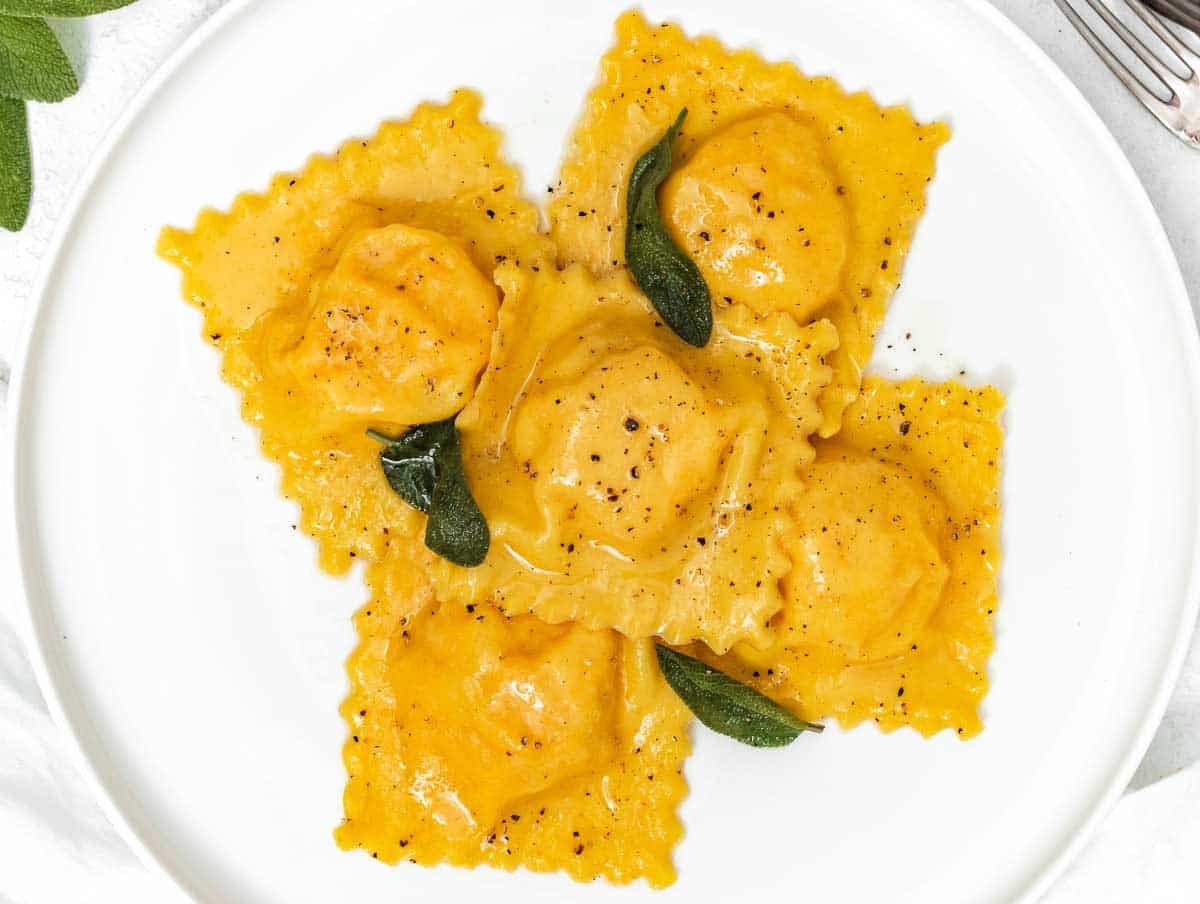
Ingredients
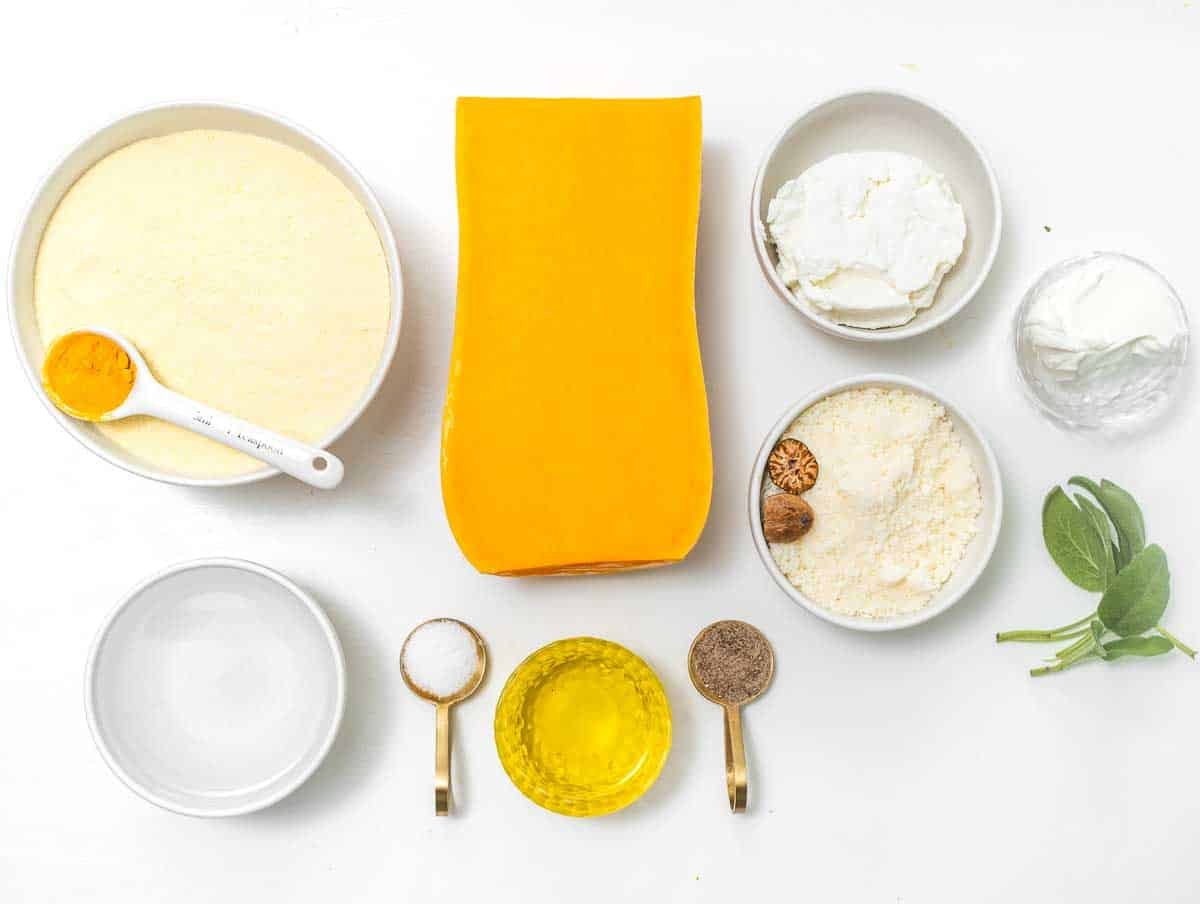
For the dough
SEMOLINA FLOUR: we make egg-free pasta dough with delicious semolina flour. This type of flour also called durum wheat semolina flour, or “semola di grano duro” in Italian, is great for most pasta recipes.
You can find it in most supermarkets and all Italian-owned joints. For this recipe, you can’t replace semolina flour.
WATER: plain tap water at room temperature.
TURMERIC: you won’t taste the turmeric. We add it for color; it makes a beautifully golden pasta dough, like the one you see in the pictures.
For the filling
BUTTERNUT SQUASH: we use fresh butternut squash that we peel, cut, and roast ourselves. You can replace that with store-bought mashed butternuts squash, as long as it’s thick.
Alternatively, you can substitute pumpkin, kabocha squash, and sweet potatoes for butternut squash.
OLIVE OIL: we use extra virgin olive oil to roast the butternut squash.
PARMESAN: parmesan cheese is great with butternut squash because it makes the filling less sweet and more flavorful.
You can use grated Parmigiano Reggiano, Grana Padano, or generic parmesan if you can’t find the real deal.
To make the recipe dairy-free, you can use a store-bought dairy-free parmesan alternative or our homemade dairy-free parmesan.
RICOTTA: ricotta cheese is a classic in ravioli fillings. It’s creamy and makes the butternut squash mellow and delicious. You can use regular ricotta or our homemade dairy-free ricotta.
NUTMEG: nutmeg is great with parmesan, ricotta, and butternut squash, and it makes this butternut squash ravioli taste genuinely Italian.
SALT AND PEPPER: while the pasta dough contains no salt, we recommend salting the butternut squash before roasting, the filling, and the pasta cooking water. Sea salt or kosher salt is our choice. We add freshly ground black pepper for aroma.
For the sauce
SAGE AND BUTTER SAUCE: the simplest way to serve butternut squash ravioli is by frying a few fresh sage leaves in melted butter (or dairy-free butter) and tossing the ravioli.
MARINARA: alternatively, you can serve them with our simple marinara sauce. We think that with marinara sauce, the ravioli are even more delicious.
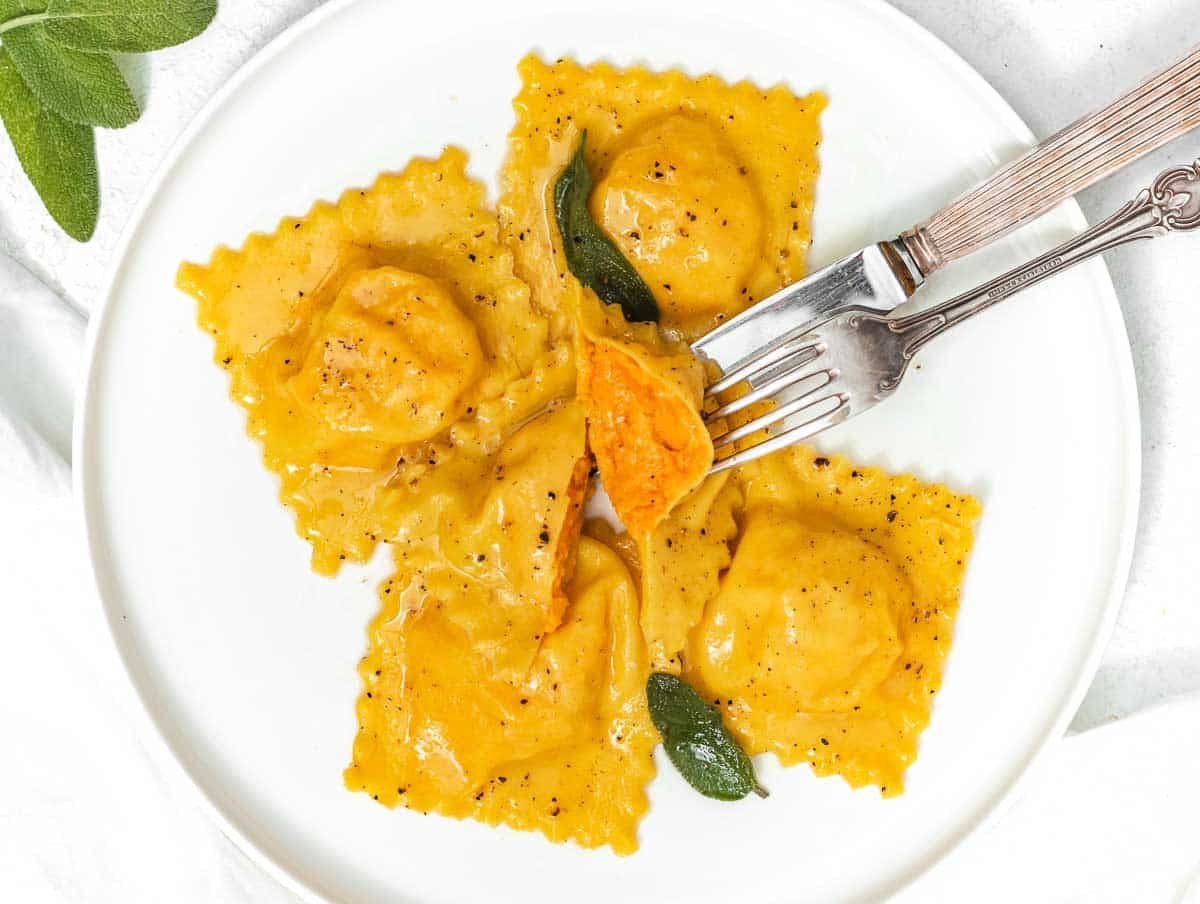
Equipment
PASTA MACHINE: you can use a manual Italian pasta machine that you can get in Italian joints or online for a few bucks. Or you can use an electric pasta roller, like a kitchen-aid pasta maker attachment.
Alternatively, you can roll the dough by hand with a rolling pin.
RAVIOLI STAMP: the easiest way to cut ravioli is with a squared or round ravioli stamp. Alternatively, you can use a pastry or pasta cutter wheel.
BRUSH: we use a brush to wet the dough and make it easier to seal off.
Instructions
Make the filling
Preheat the oven to 400°F or 200°C. Line a baking sheet with parchment paper.
Peel, seed, and cut the butternut squash into 1-inch chunks. Season it with olive oil and half a teaspoon of salt and roast it in the oven for 30 minutes or until very soft.
Tip: in the meantime, you can make the ravioli dough.
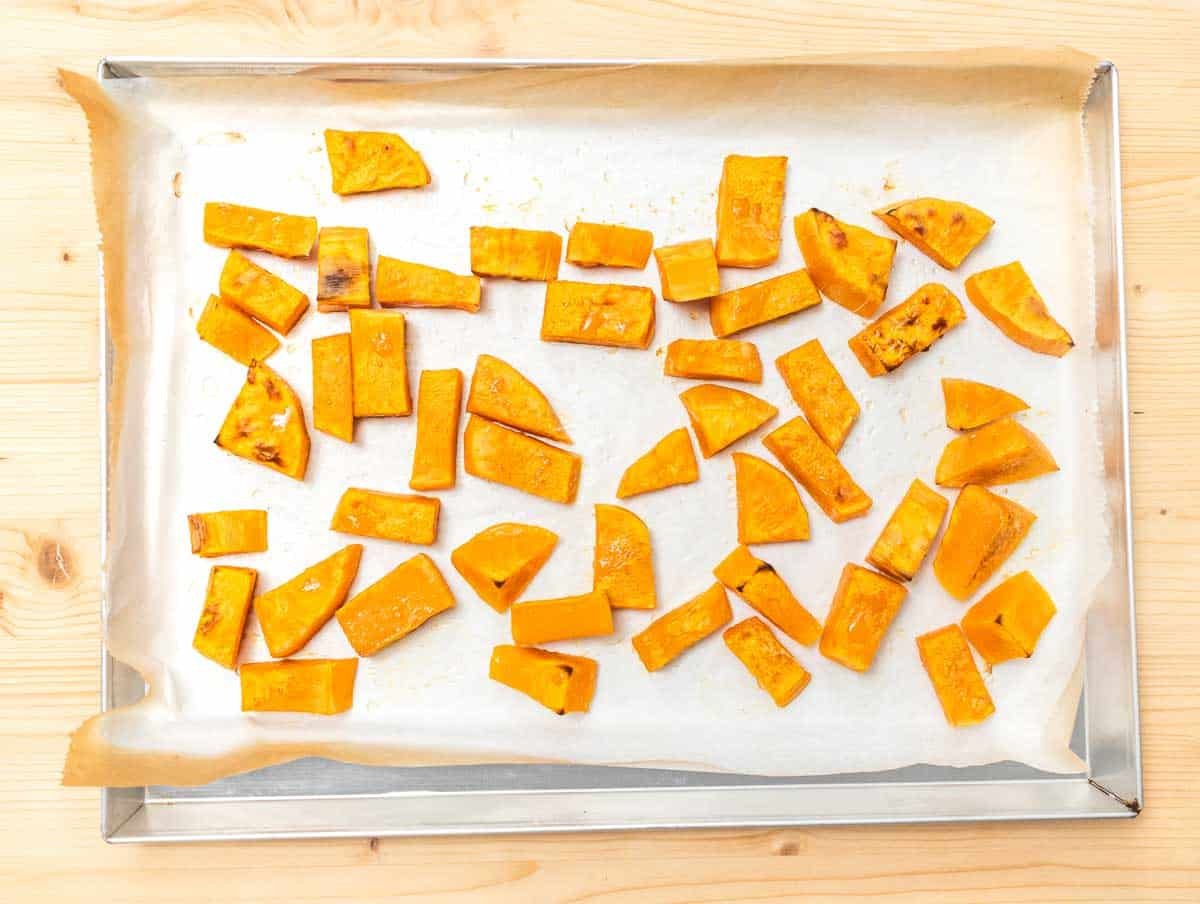
To a mixing bowl, add the ricotta, grated parmesan, the remaining 1/4 teaspoon of salt, black pepper, and grated nutmeg, and mix with a fork.
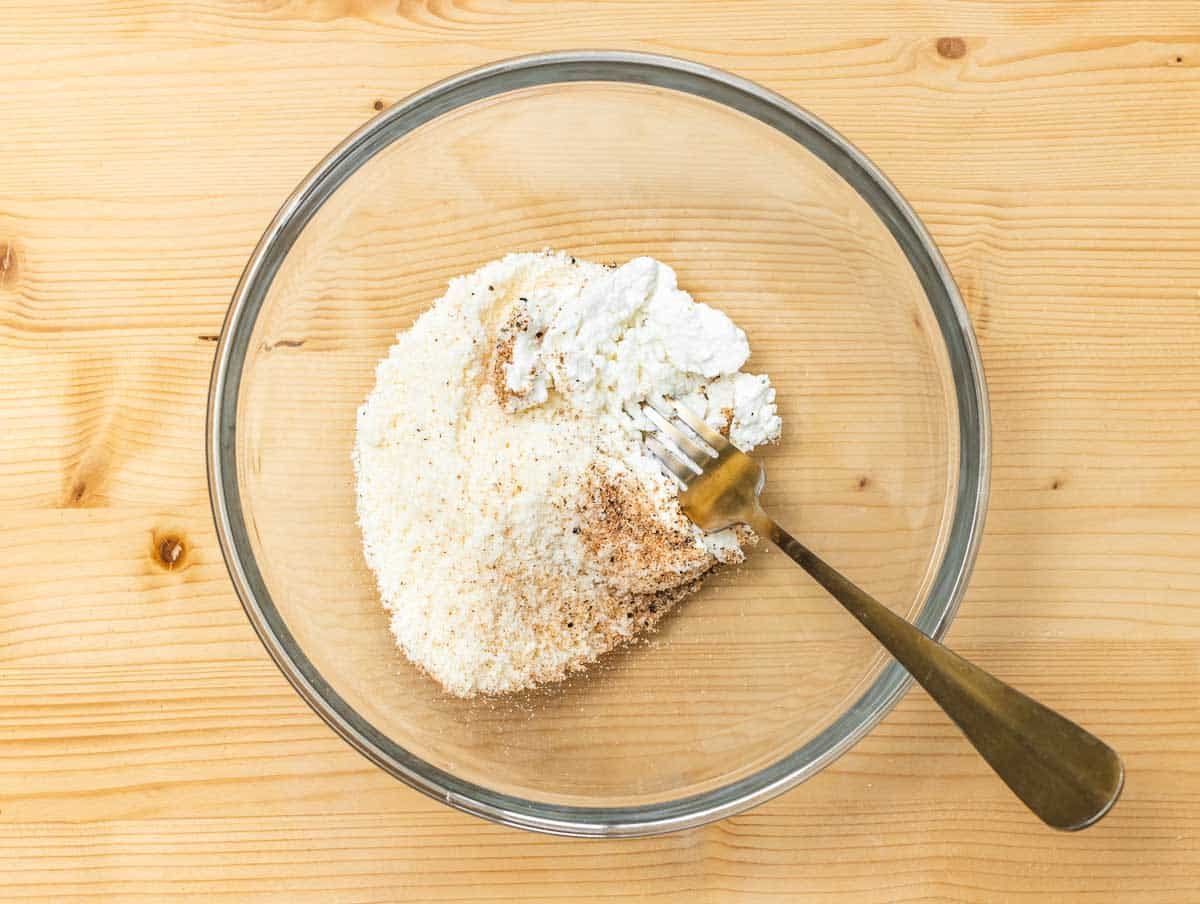
Once the squash is tender, transfer it into a separate mixing bowl and mash it well with a fork.
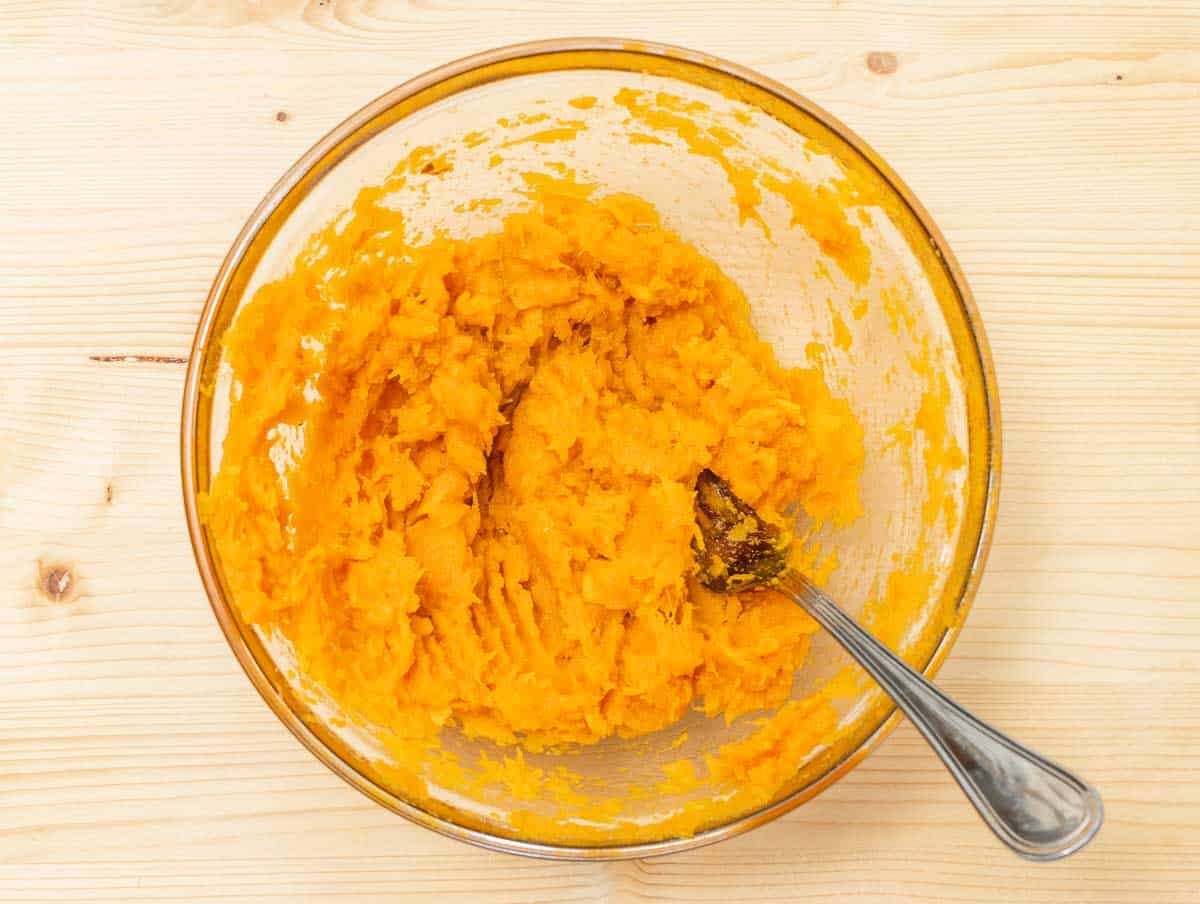
Add in the cheese mixture, and mix with a spatula until well combined.
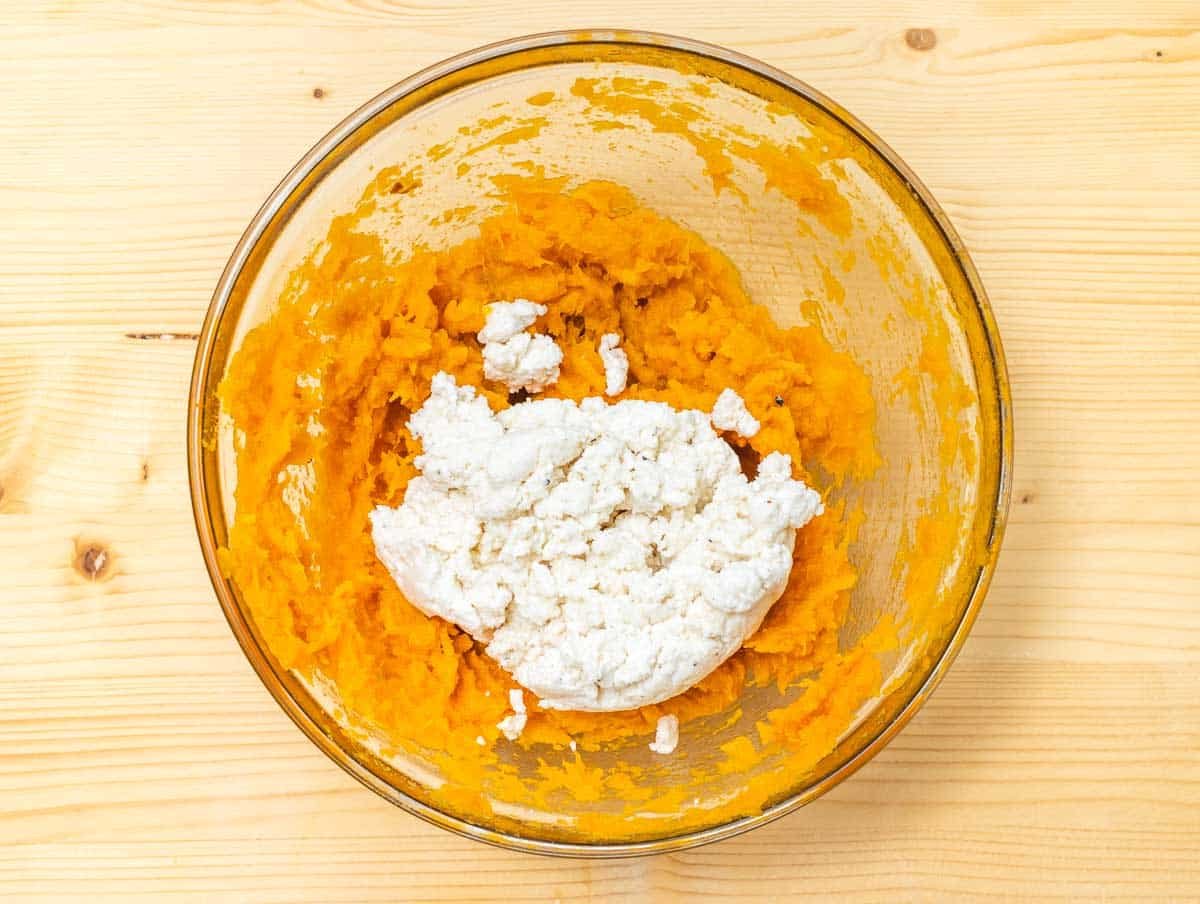
Your butternut squash ravioli filling is ready. It should be creamy, spoonable, and relatively smooth. Taste it and adjust for salt, cheese, and nutmeg.
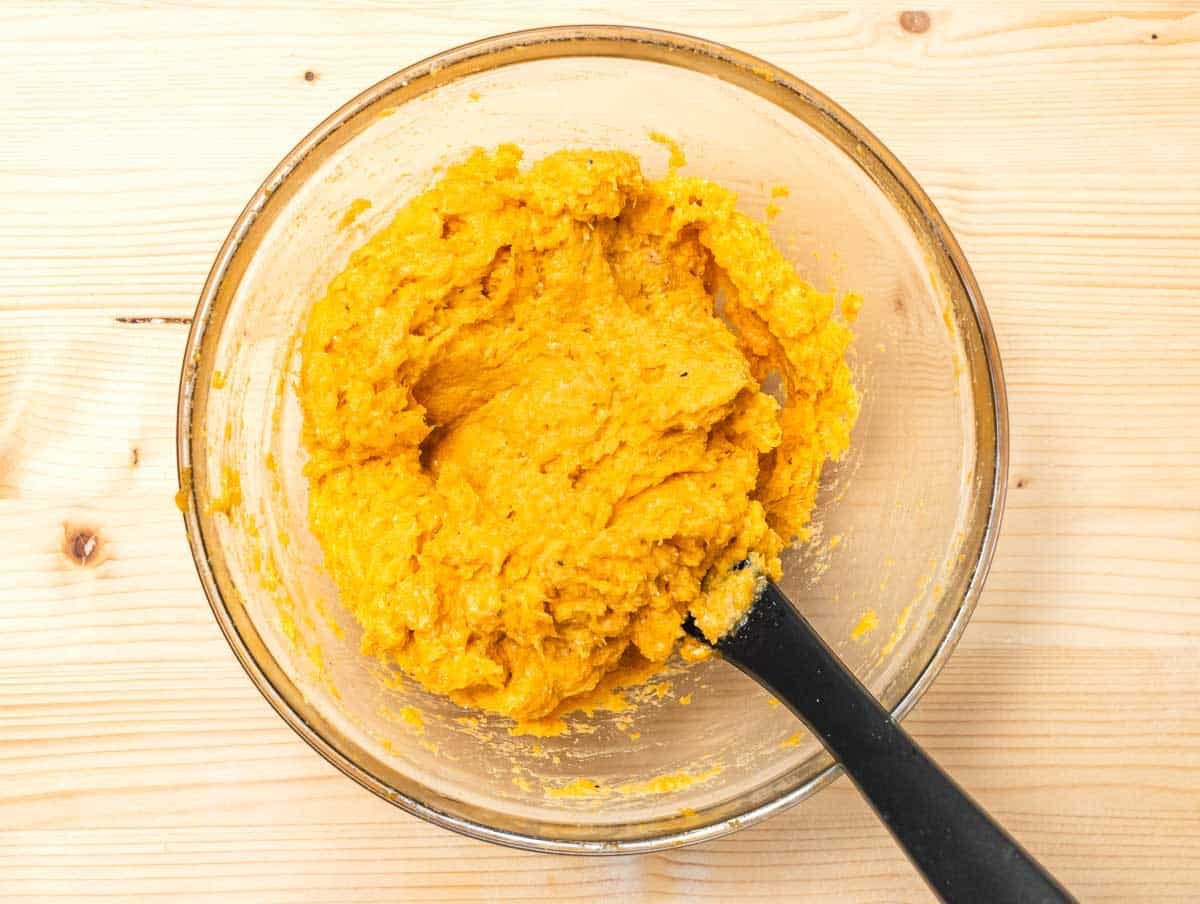
Make the dough
To a mixing bowl, add the semolina flour, turmeric, and water. Mix with a fork until the dough comes together.
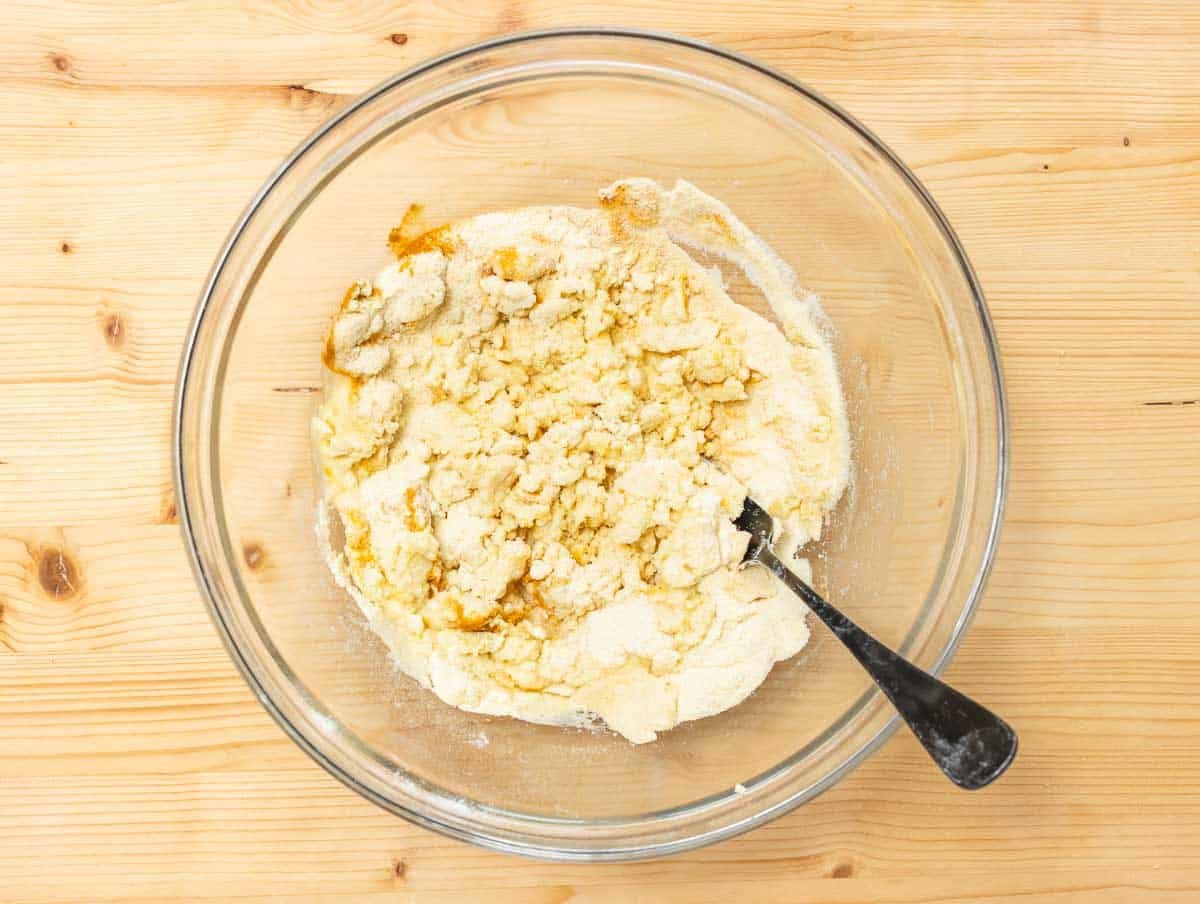
Transfer to a work surface (you can use a cutting board, pasta board, or kitchen counter) and knead vigorously with your hands for about 5 minutes until the dough is smooth.
Tip: If the dough sticks sprinkle with a tiny bit of semolina flour at a time until it doesn’t.
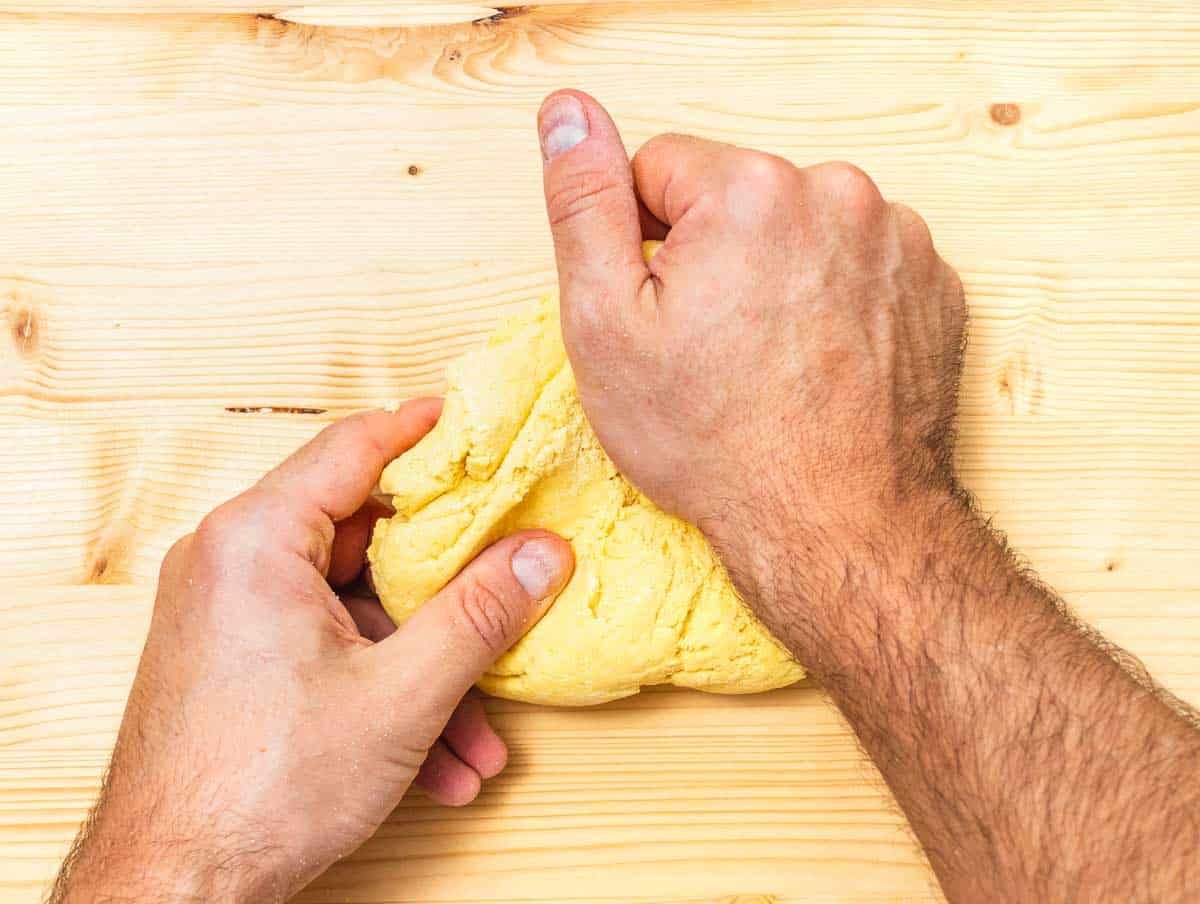
Wrap with film and let rest on the worktop for 15 minutes.
Tip: in the meantime, you can prep the ingredients for the sauce or finish preparing the filling.
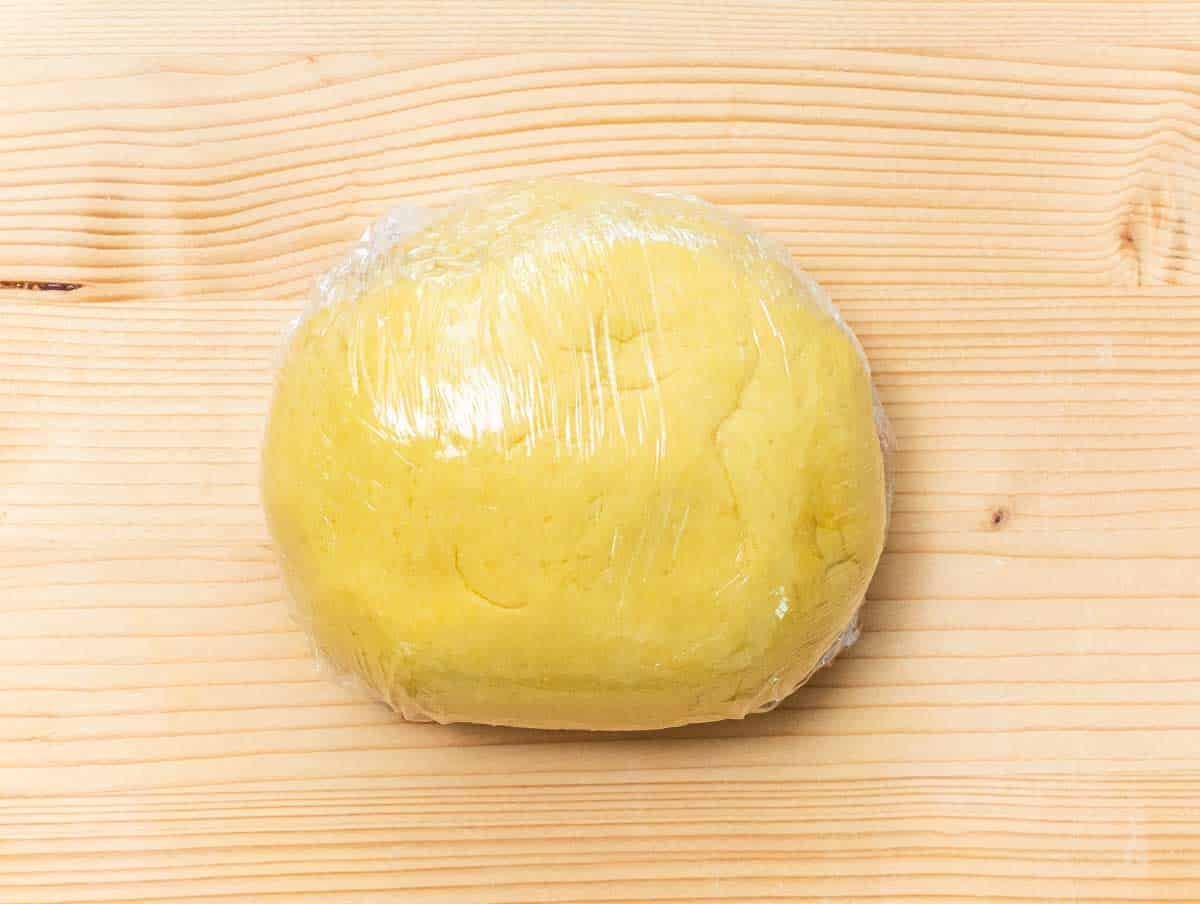
Make the ravioli
Cut off 1/3 of the dough and wrap the remaining 2/3 in plastic wrap to prevent it from drying. Sprinkle your worktop with semolina flour.
Tip: we make a few ravioli at a time to prevent the dough from drying out while you work it. This is super important, especially if it’s your first time making stuffed pasta.
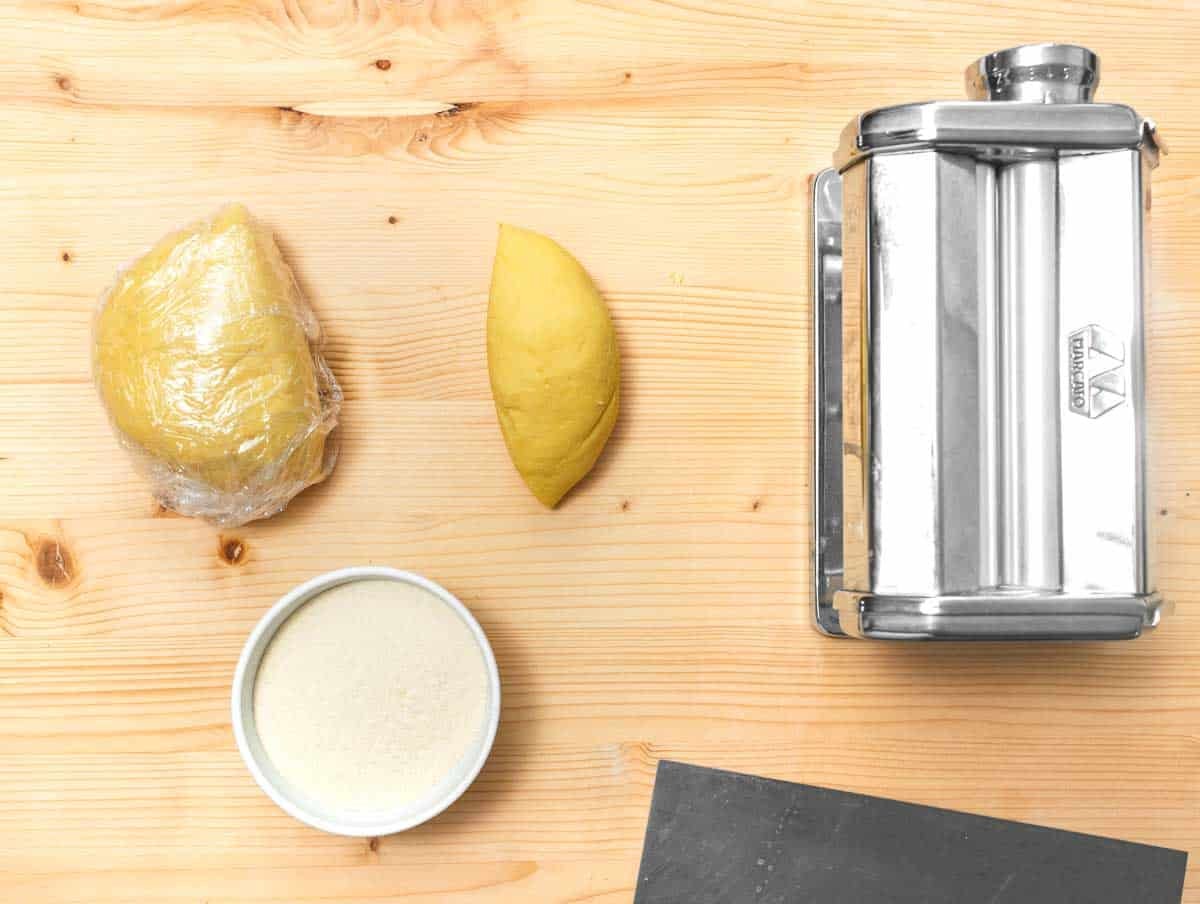
Run the dough through your pasta machine with the widest setting.
Next, run it again with the middle-widest setting. Finally, run it one more time with the second thinnest setting. Finally, lay it flat on your worktop and cut it in half with a large knife.
You want to roll each dough piece three times, cut it in half, and get two equally long and rectangular sheets of pasta.
Tip: if your rolled pasta has a wonky shape or breaks, then fold it on itself twice to form a rectangle, and run it through the pasta machine again.
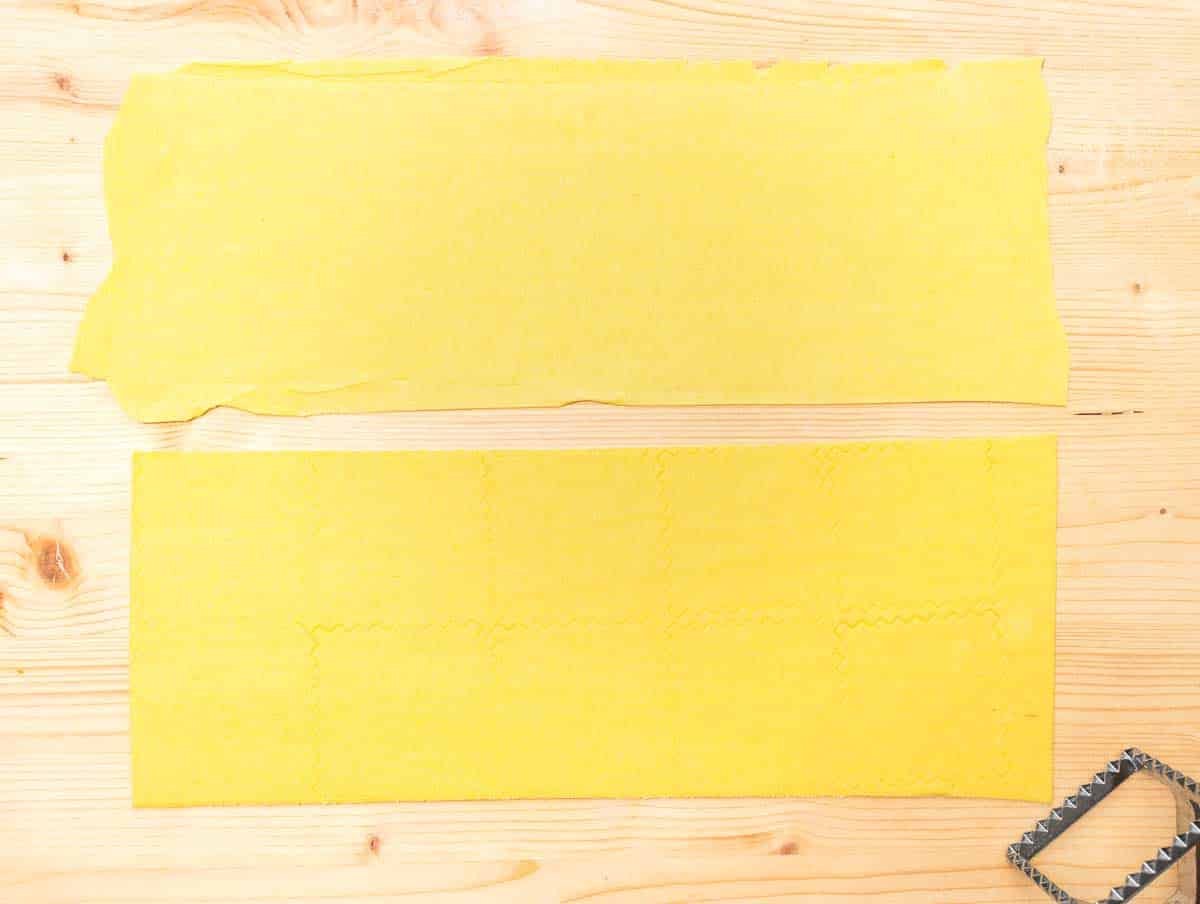
With your ravioli stamp, mark one pasta sheet lightly without cutting the sheet through. This will help you know where to position the filling.
Add about 1 tablespoon of butternut squash mixture to the center of each marking. I do this with two spoons.
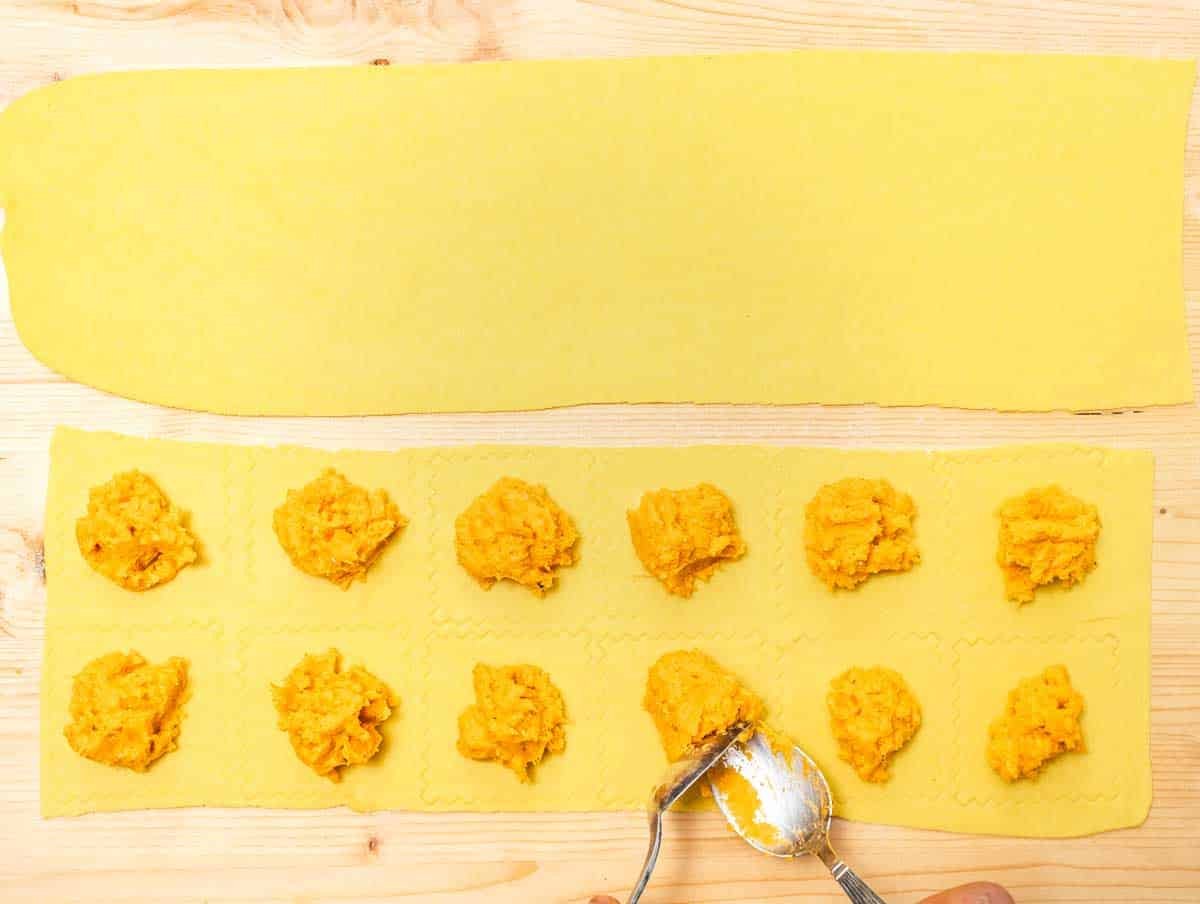
Then brush the exposed pasta with a bit of water to make it sticky.
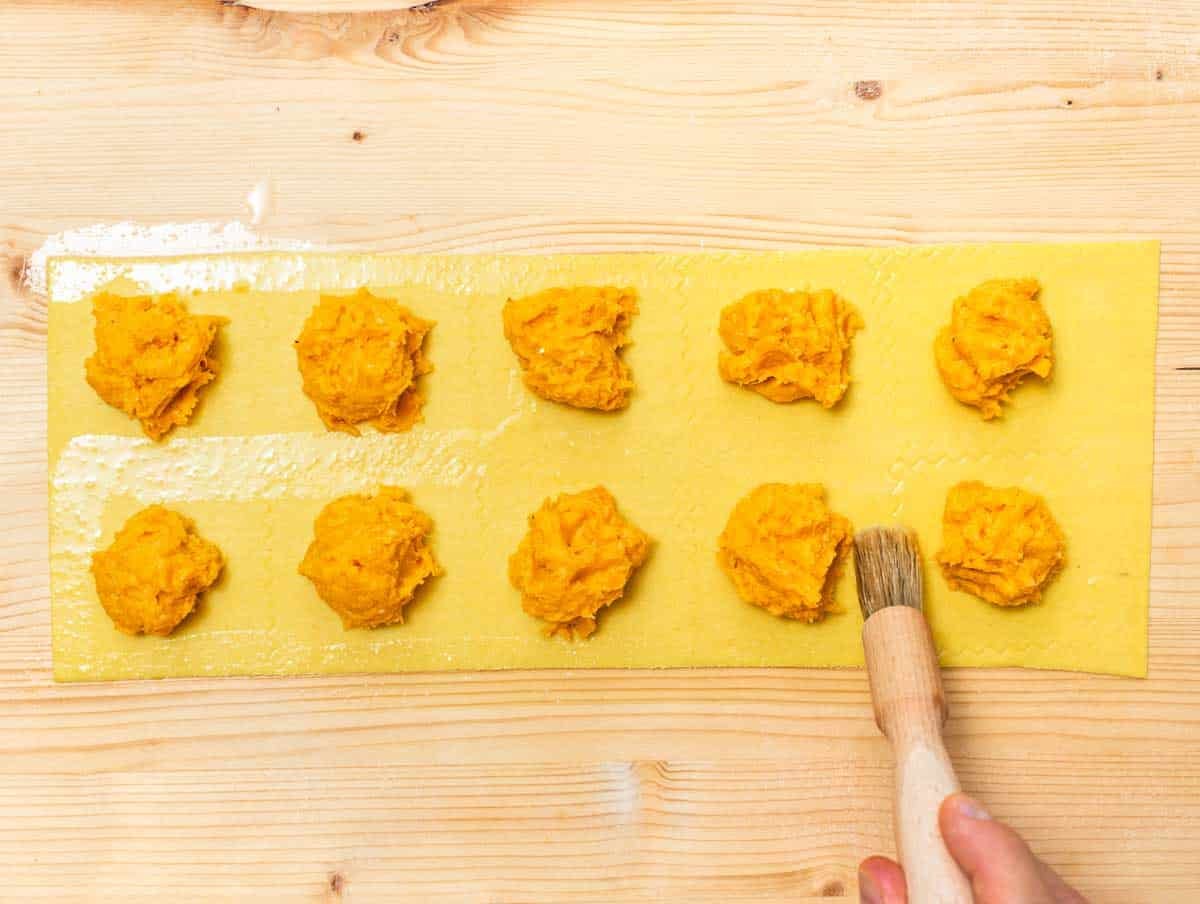
Cover with the other pasta sheet.
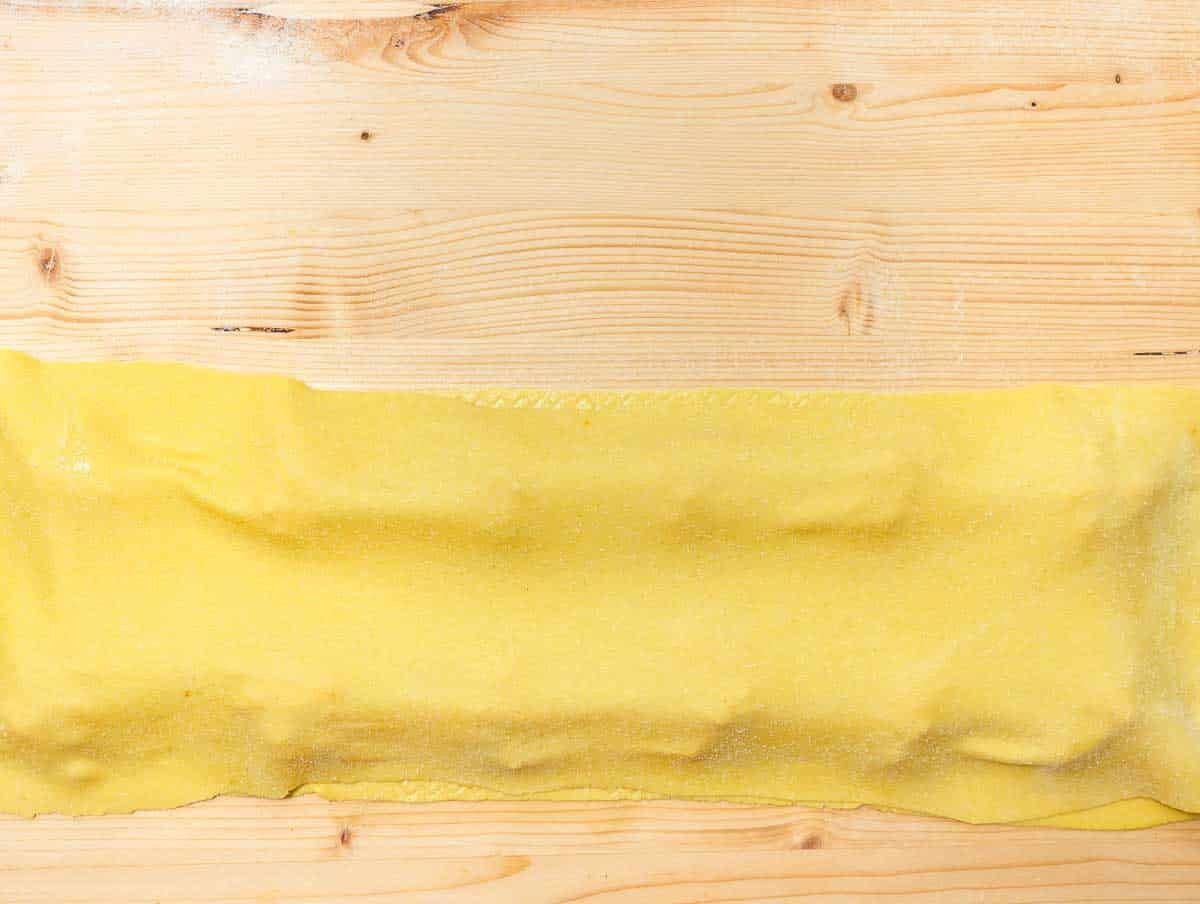
Seal the ravioli pressing away the air bubbles with your fingers.
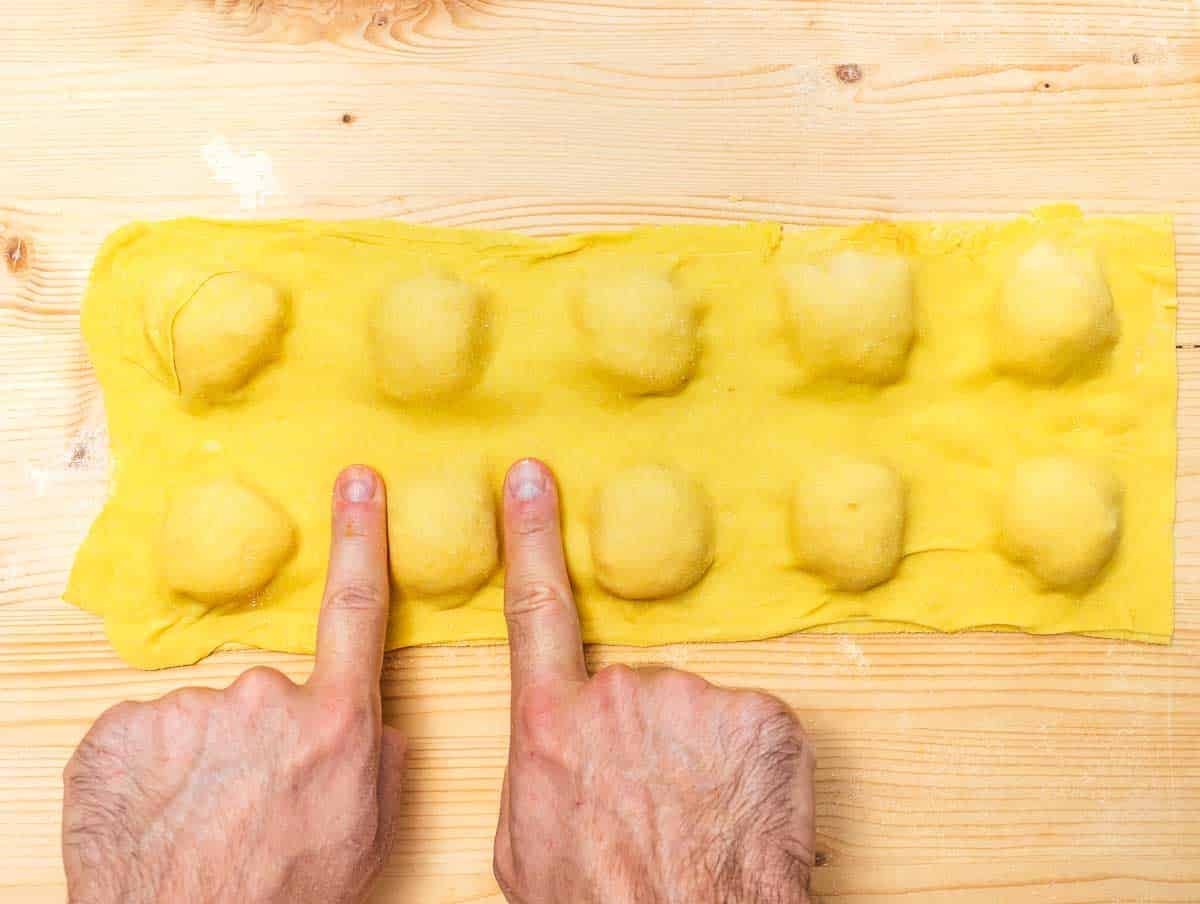
Now cut the ravioli with your ravioli stamp. Repeat until you run out of pasta dough.
Tip: use all trimmings to make more ravioli.
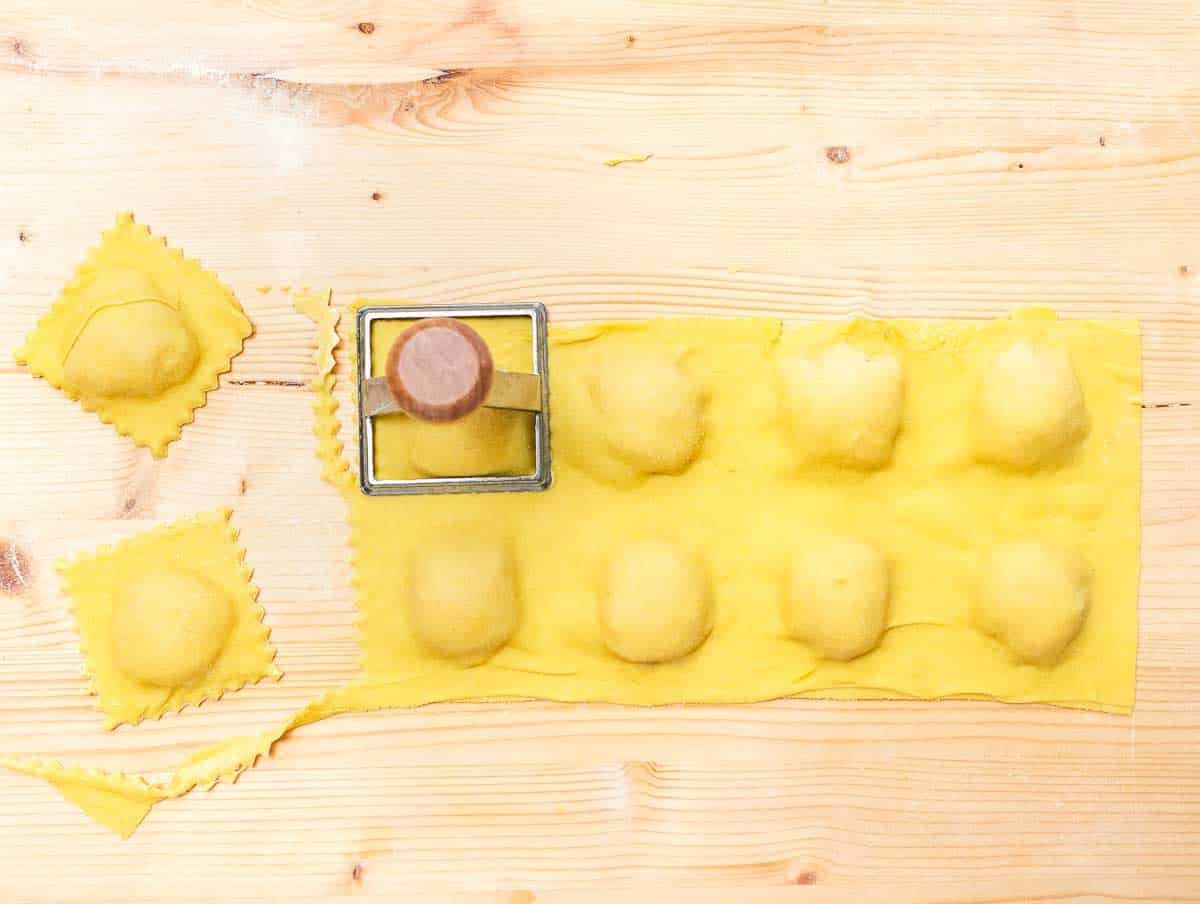
In total, you should be able to make 28 ravioli with our quantities, to serve 4 to 5 people.
Transfer them onto a baking sheet lined with parchment paper or with a kitchen cloth.
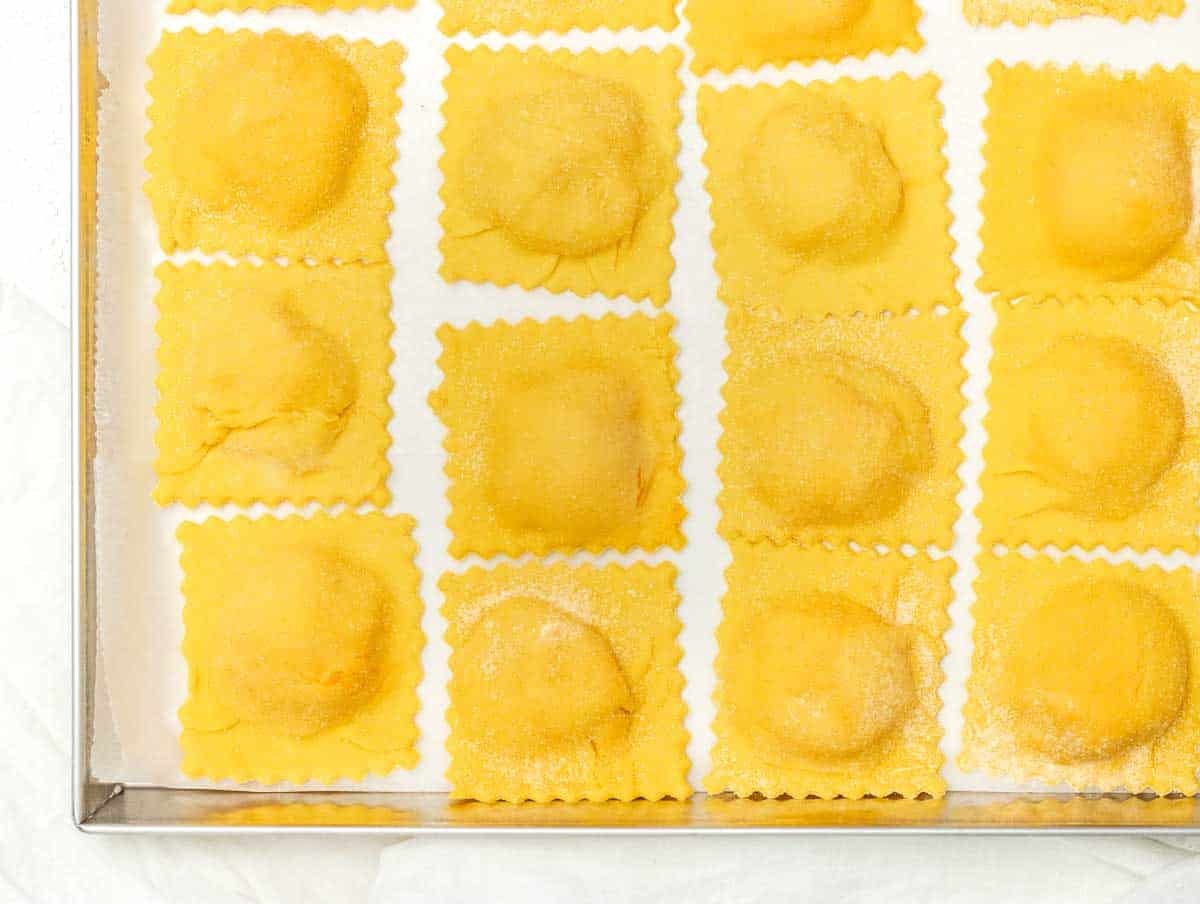
Cook the ravioli
Fresh ravioli cook in one minute, so our advice is to make the sauce first. You can use our marinara sauce or a simple butter and sage sauce.
For the butter and sage sauce, melt the butter on a skillet, add the sage, and fry it for 1 minute.
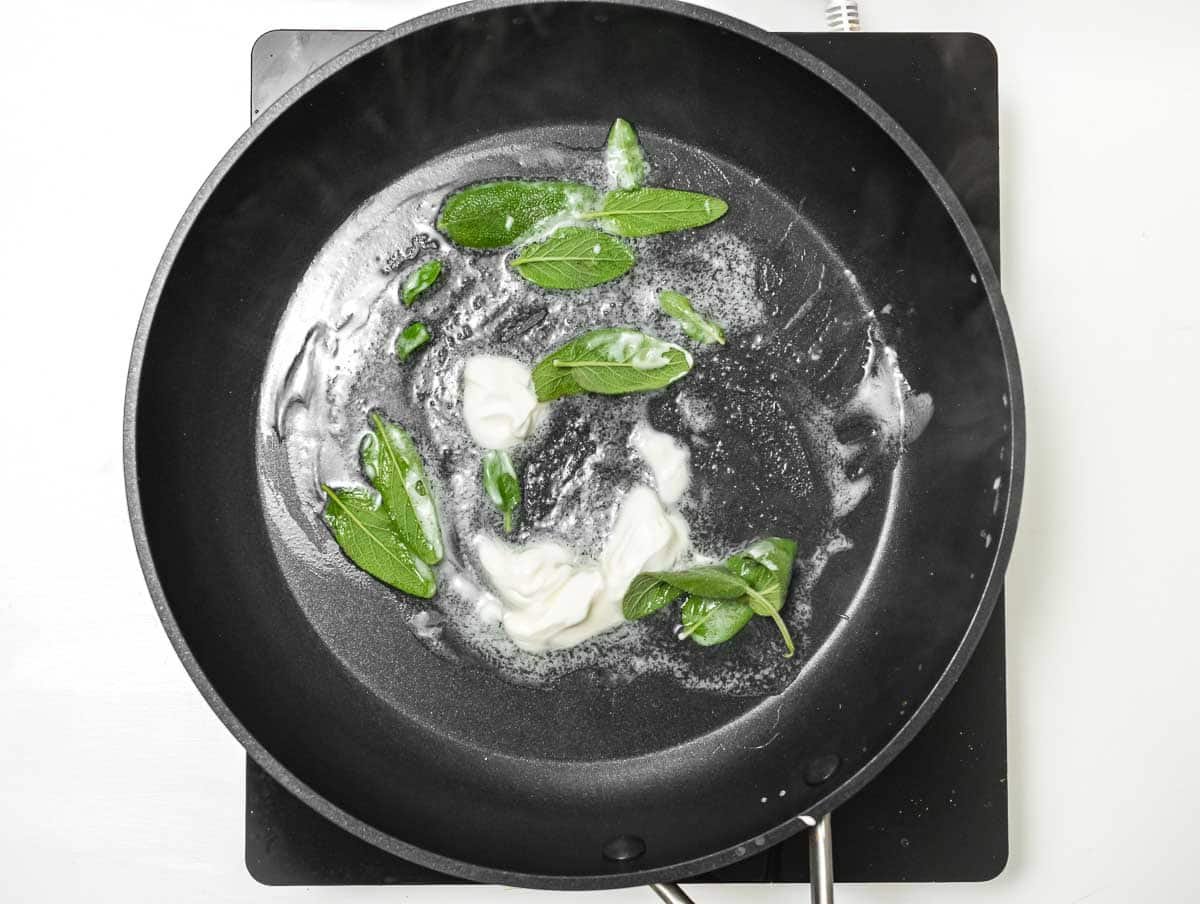
Bring a large pot of salted water to a gentle simmer, and cook seven ravioli at a time without overcrowding the pot.
They are ready when they float to the surface. It takes about 1 minute. Gently scoop them out of the water with a slotted spoon and add them to the pan with the sauce.
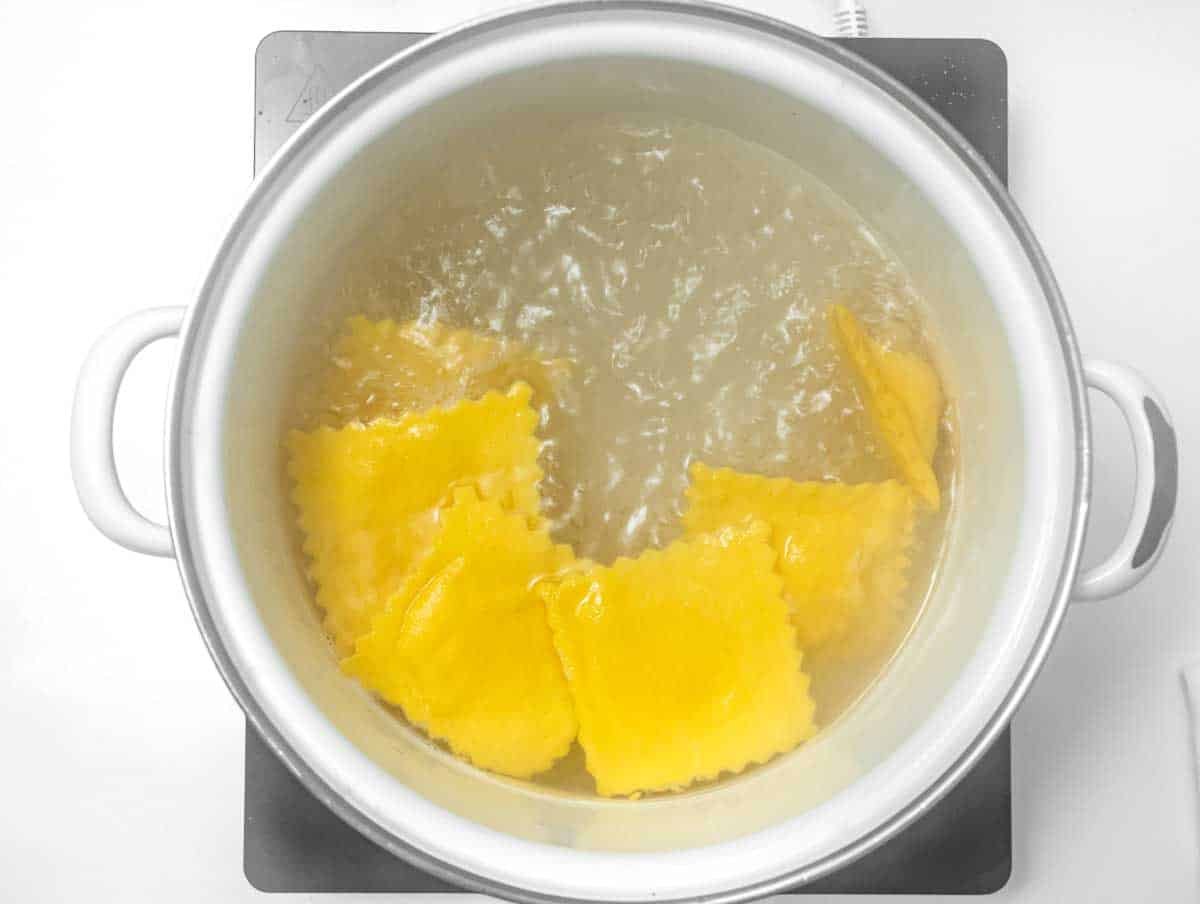
Serve 5 to 7 ravioli per person, drizzle the sauce on top, and sprinkle with freshly ground black pepper. Buon appetito!

Serving suggestions
Butternut squash ravioli are a fulfilling main course, and we recommend pairing them with a tasty side dish of veggies or with one of our delicious salads. These are some of our ideas:
- Italian salad with oregano dressing
- Green bean salad with creamy mustard dressing
- Roasted broccoli and cauliflower
- Simple side salad with crunchy leaves
- Grilled, roasted, or air fryer eggplant
- Shaved brussels sprout salad
- Fennel and orange salad
- Roasted brussels sprouts
Salads
Italian Salad
Salads
Green Bean Salad
Salads
Side Salad
Sides
Roasted Eggplant
Salads
Fennel and Orange Salad
Storage
The best way to store butternut squash ravioli is to do so before cooking them. You can store them in the refrigerator, covered on a tray for about 3 days.
You can freeze them for up to 6 months. To do so, arrange them on a baking sheet without overlapping.
Pop them in the freezer for about 2 hours, or until hard, then transfer them into a freezer-friendly bag to save space and put them back in the freezer.
You won’t need to thaw frozen ravioli. Cook them in salted boiling water from frozen.
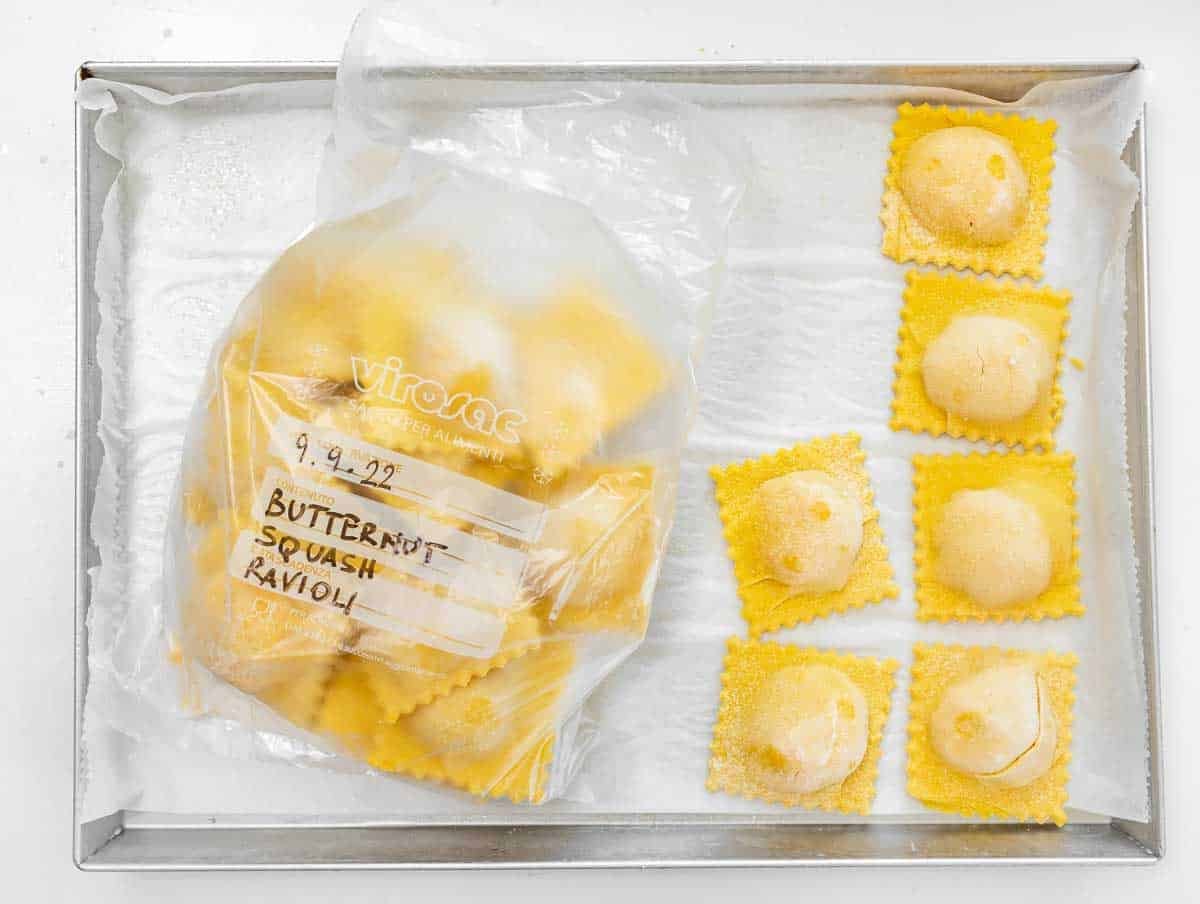
More Italian-Inspired Recipes
- Sweet potato gnocchi
- Homemade trofie with pesto
- Homemade potato gnocchi
- Easy pasta with broccoli
- Vegan mushroom pasta
- Pasta with lentils
- Traditional Tuscan soup
- Rigatoni arrabbiata
Pasta
Sweet Potato Gnocchi
Pasta
Gnocchi
Pasta
Vegan Mushroom Pasta
One-pot Meals
Lentil Pasta
Pasta
Rigatoni Arrabbiata
More Butternut Squash Recipes
- Roasted butternut squash soup
- Butternut squash risotto
- Creamy butternut squash pasta
- Roasted butternut squash

Butternut Squash Ravioli
Equipment
- Pasta machine for rolling the dough. Alternatively, a rolling pin to roll by hand
- Ravioli Cutter
Ingredients
FOR THE PASTA DOUGH
- 2 cups semolina flour
- ⅔ cups water at room temperature
- ½ teaspoon turmeric for color
FOR THE FILLING
- 1½ pounds butternut squash (raw with peel on) or 21 ounces peeled and cooked
- 1 cup parmesan grated, or dairy-free parmesan
- ⅔ cup ricotta or dairy-free ricotta
- ¾ teaspoon salt
- ½ teaspoon black pepper
FOR THE SAUCE
- butter (or dairy-free butter) and sage 1 tbsp of butter and 5 leaves of sage per person
- or homemade marinara sauce
Instructions
MAKE THE FILLING
- Preheat the oven to 400°F or 200°C. Line a baking sheet with parchment paper.Peel, seed, and cut the butternut squash into 1-inch chunks. Season it with olive oil and half a teaspoon of salt. Roast it in the oven for 30 minutes or until very soft.
- To a mixing bowl, add the ricotta, grated parmesan, the remaining ¼ teaspoon of salt, black pepper, and grated nutmeg, and mix with a fork.
- Once the squash is tender, transfer it into a separate mixing bowl and mash it well with a fork.
- Add in the ricotta mixture, and mix with a spatula until well combined.Your butternut squash ravioli filling is ready. It should be creamy, spoonable, and relatively smooth. Taste it and adjust for salt, cheese, and nutmeg.
MAKE THE DOUGH
- To a mixing bowl, add the semolina flour, turmeric, and water. Mix with a fork until the dough comes together.
- Transfer to a work surface and knead vigorously with your hands for about 5 minutes until the dough is smooth.
- Wrap with film and let rest on the worktop for 15 minutes.
MAKE THE RAVIOLI
- Cut off ⅓ of the dough and wrap the remaining ⅔ in plastic wrap to prevent it from drying. Sprinkle your worktop with semolina flour.
- Run the dough through your pasta machine with the widest setting.Next, run it again with the middle-widest setting. Then, run it one more time with the second thinnest setting. Finally, lay it flat on your worktop and cut it in half with a large knife.You want to roll each dough piece three times, then cut it in half, and get two equally long and rectangular sheets of pasta.
- With your ravioli stamp, mark one pasta sheet lightly without cutting the sheet through. This will help you know where to position the filling.Add about 1 tablespoon of butternut squash mixture to the center of each marking. I do this with two spoons.
- Then brush the exposed pasta with a bit of water to make it sticky.
- Cover with the other pasta sheet.
- Seal the ravioli pressing away the air bubbles with your fingers.
- Cut the ravioli with your ravioli stamp.
- You should be able to make 28 ravioli with our quantities, and serve 4 to 5 people.
COOK THE RAVIOLI
- Fresh ravioli cook in one minute, so our advice is to make the sauce first. You can use our marinara sauce or a simple butter and sage sauce.For the butter sage sauce, melt the butter on a skillet, add the sage, and fry it for 1 minute.
- Bring a large pot of salted water to a gentle simmer, and cook seven ravioli at a time without overcrowding the pot.They are ready when they float to the surface. It takes about 1 minute. Gently scoop them out of the water with a slotted spoon and add them to the pan with the sauce.
- Serve 5 to 7 ravioli per person, drizzle the sauce on top, and sprinkle with freshly ground black pepper. Buon appetito!

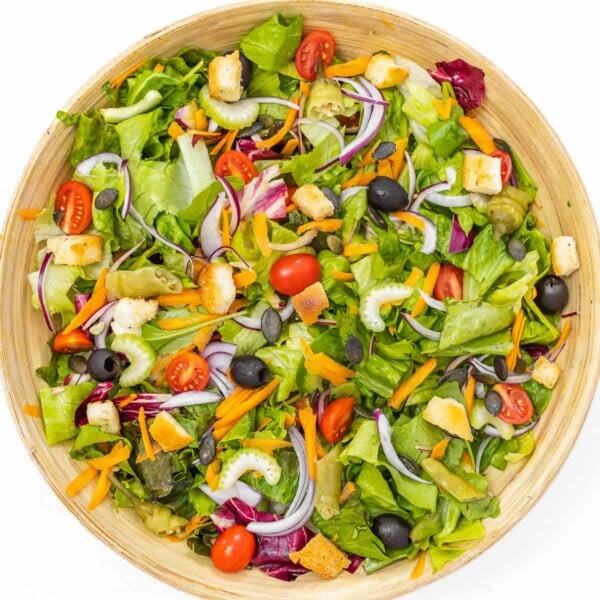
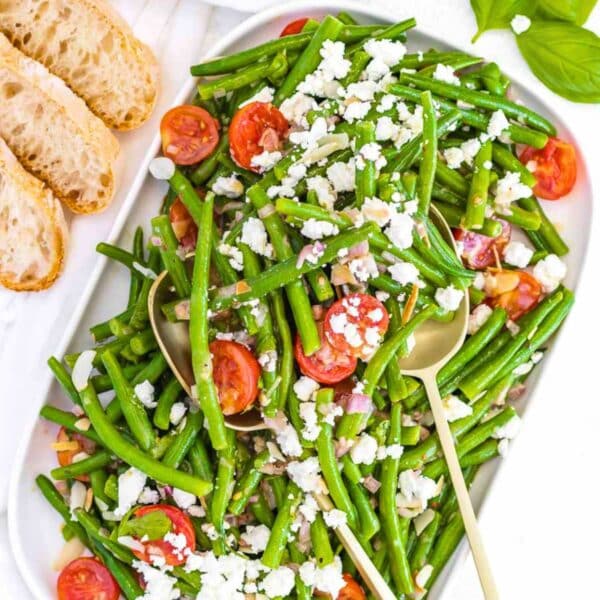
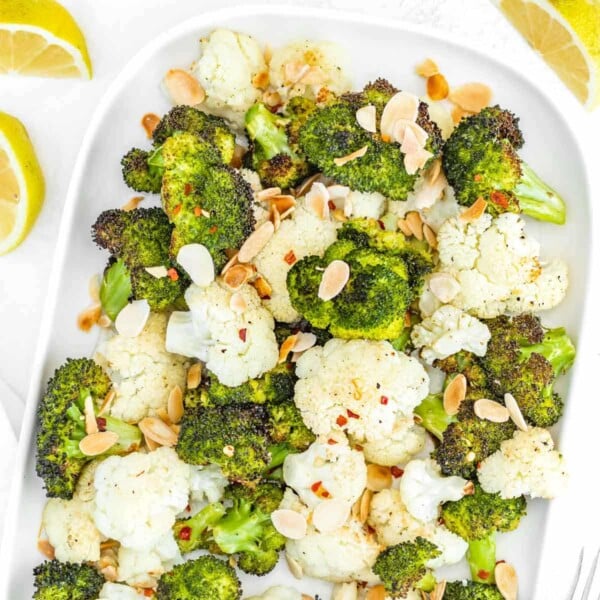
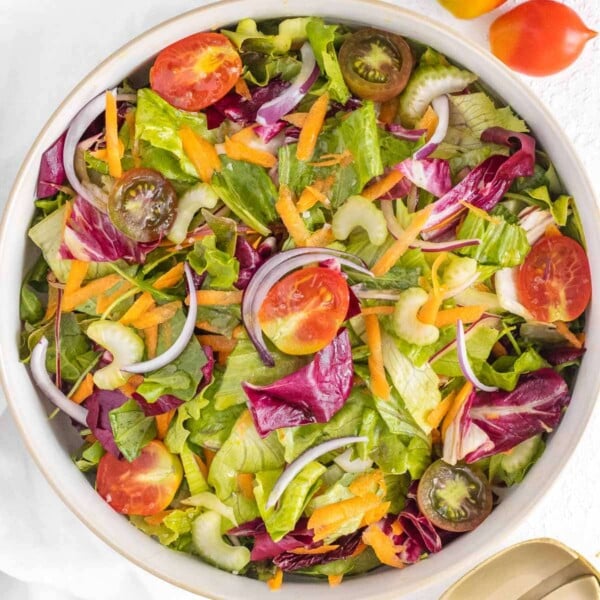
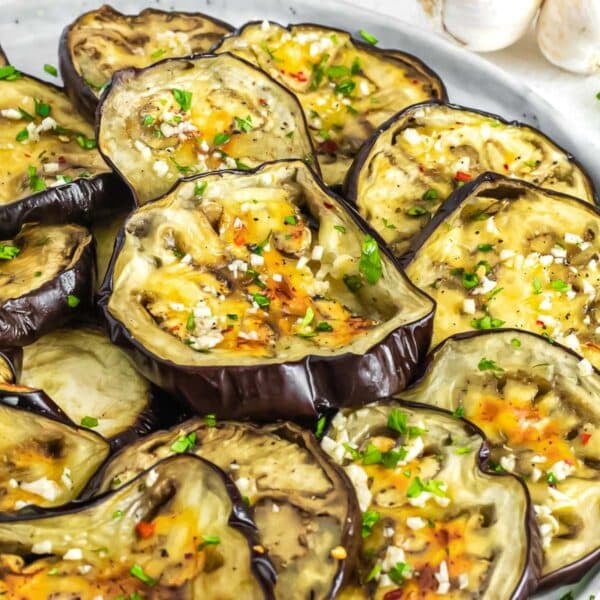
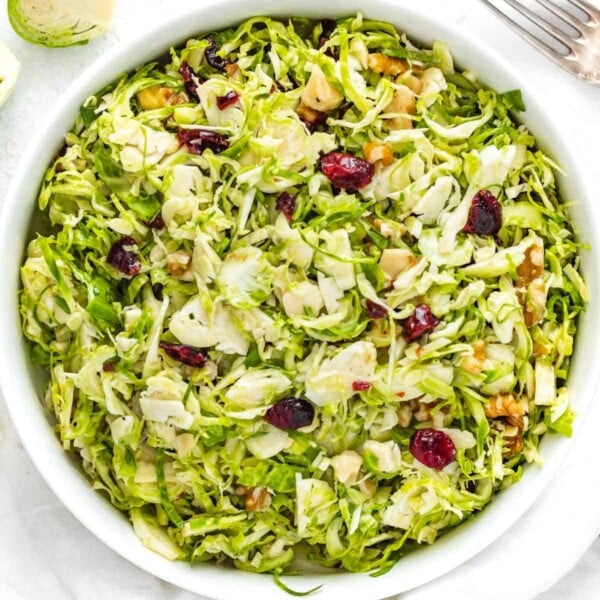
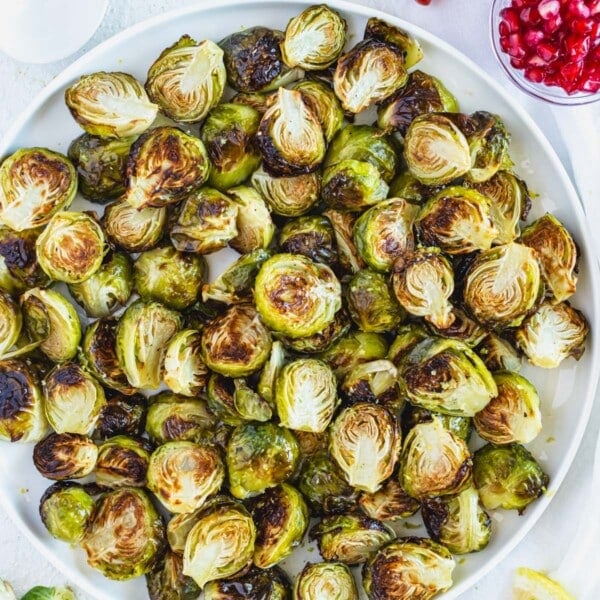
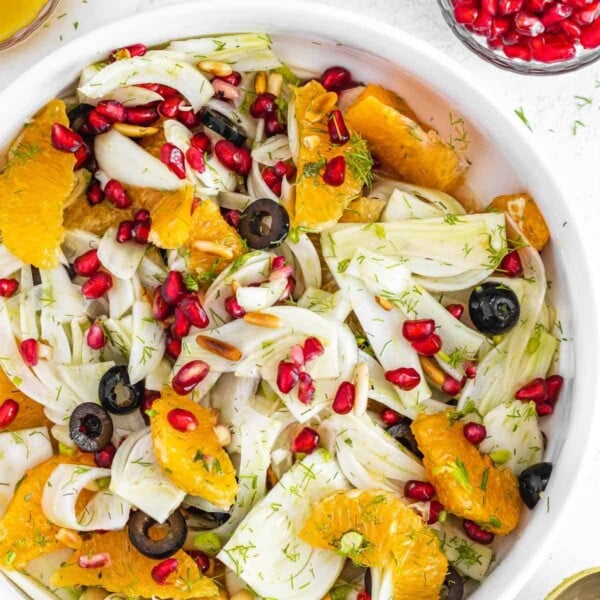
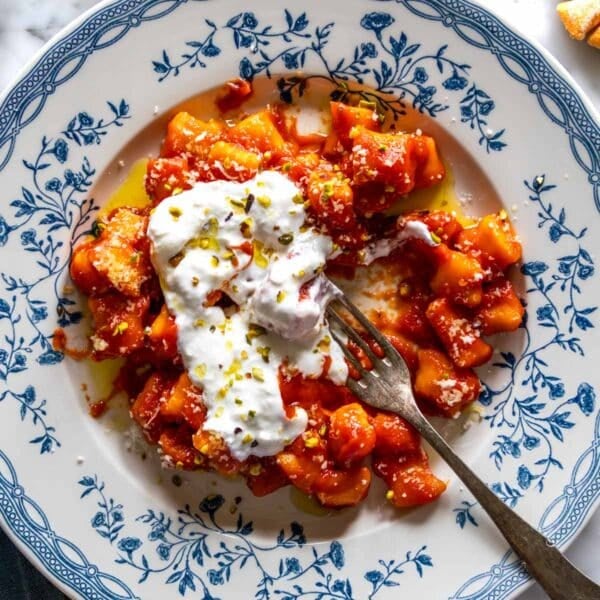
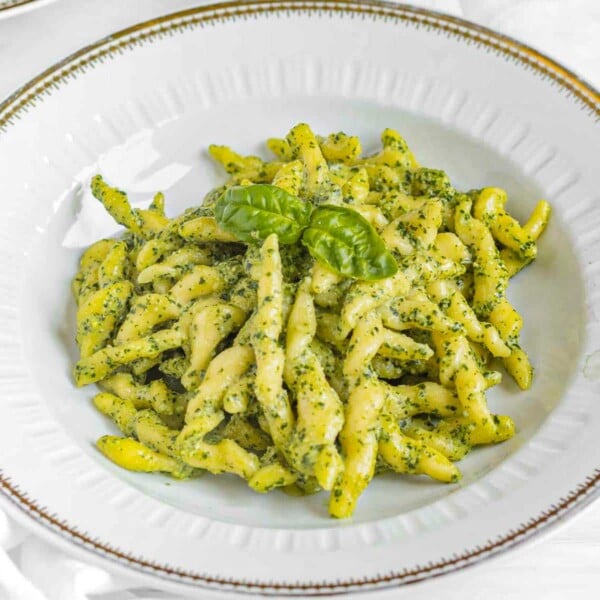
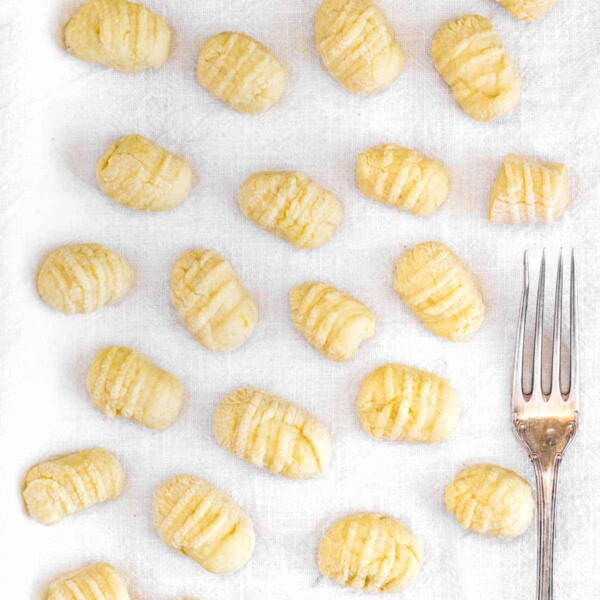
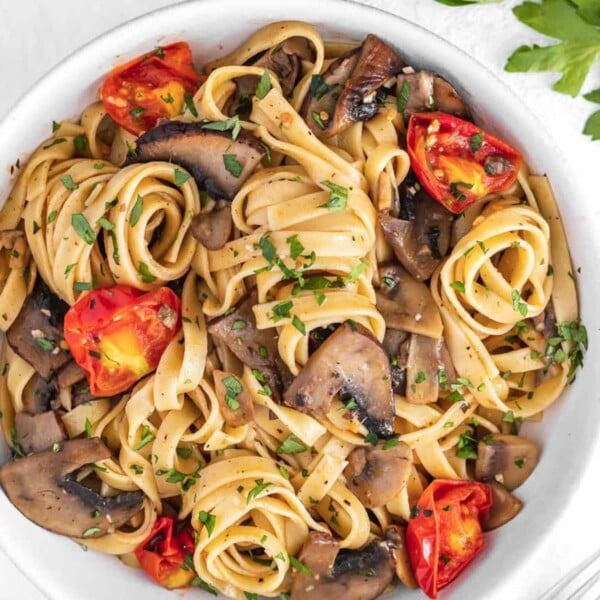
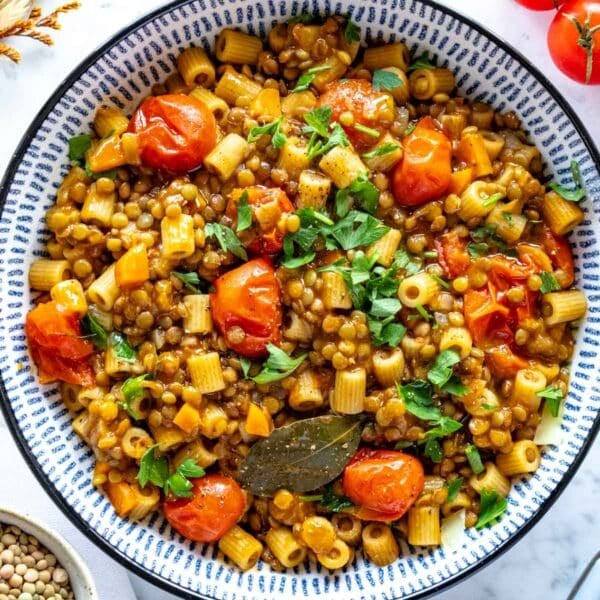
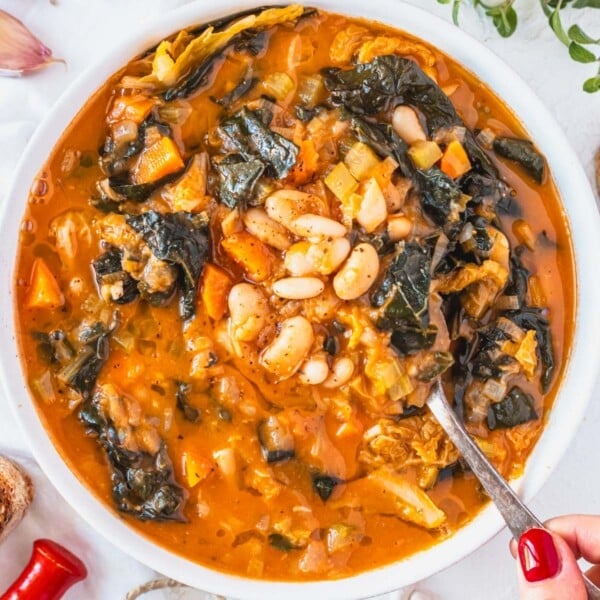
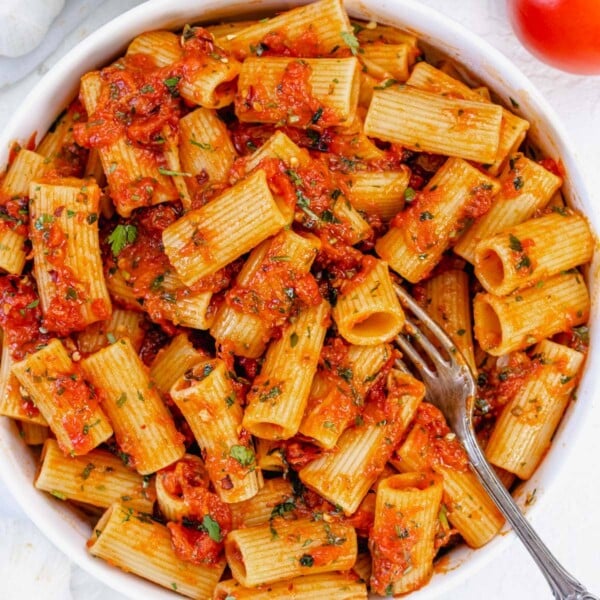

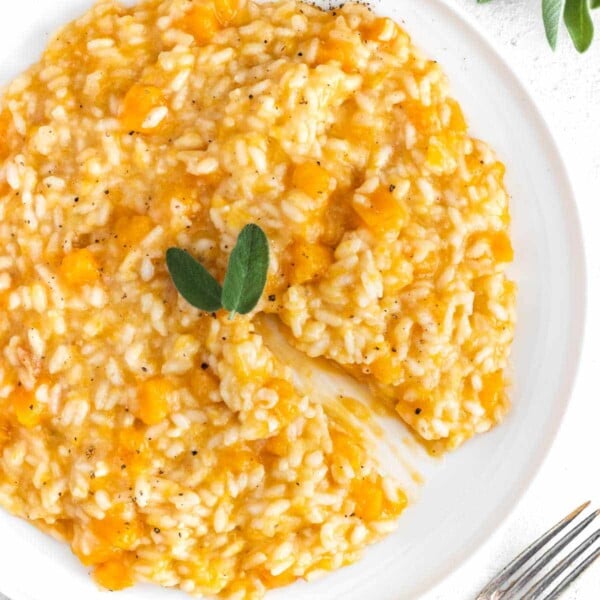

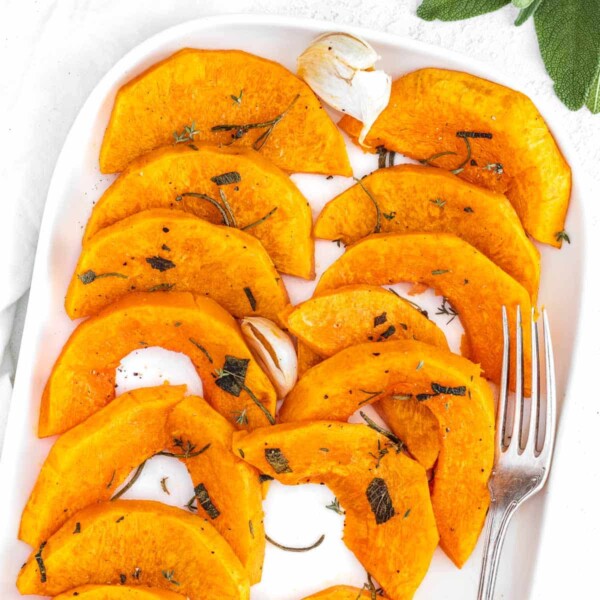
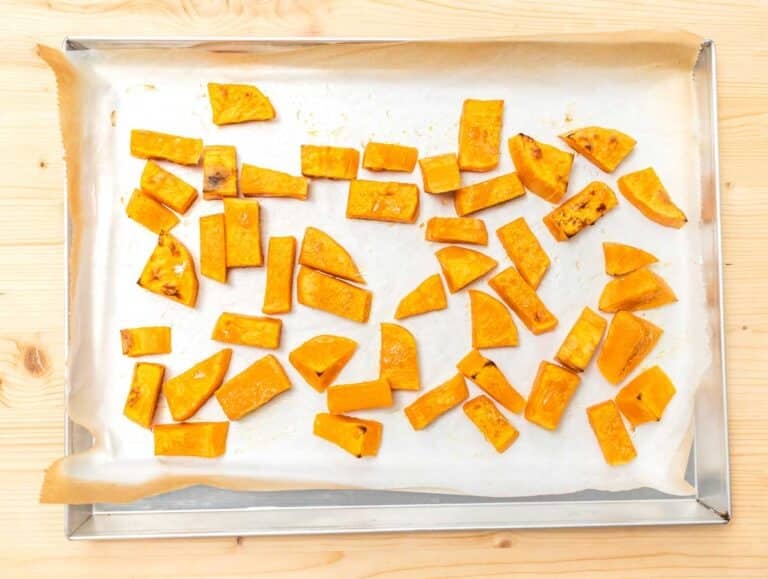
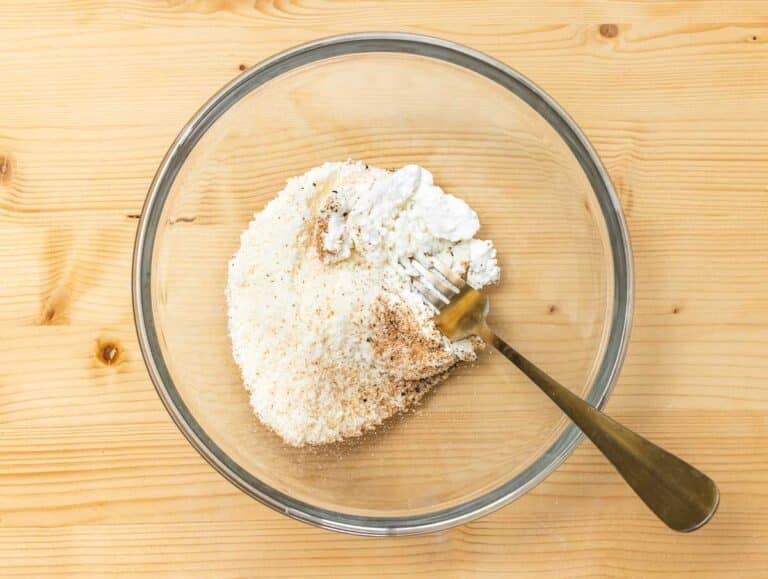
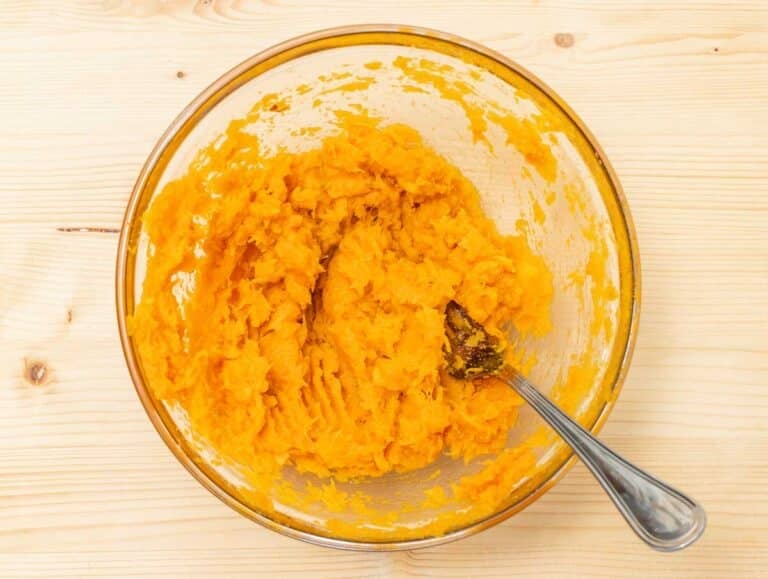
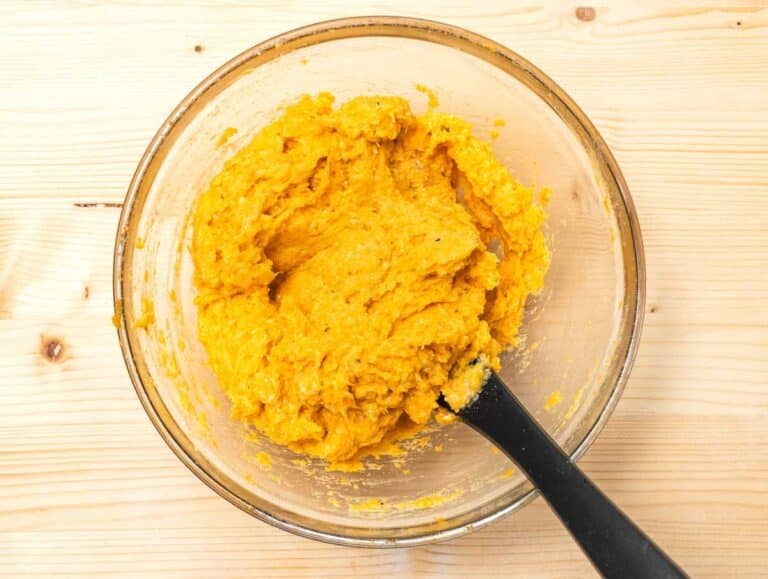
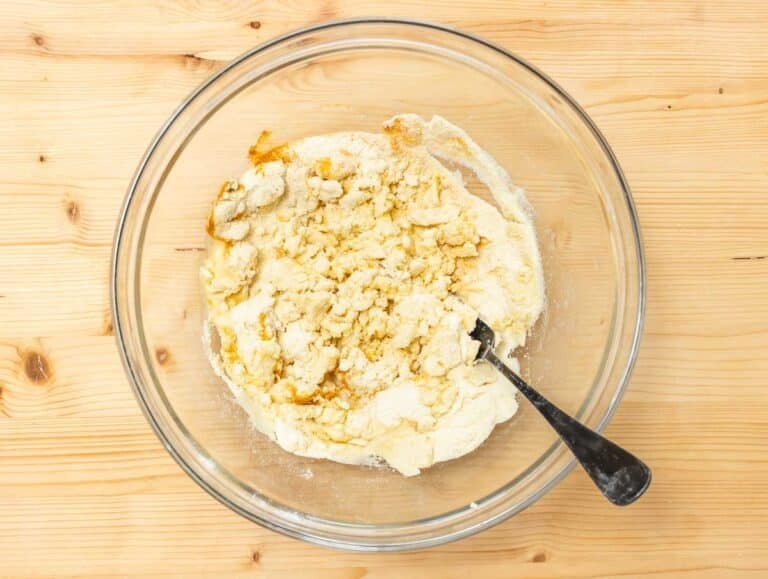
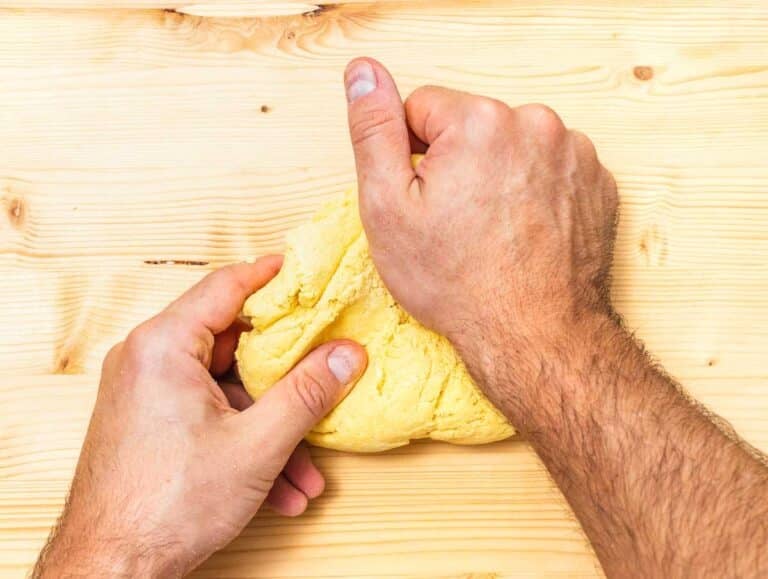
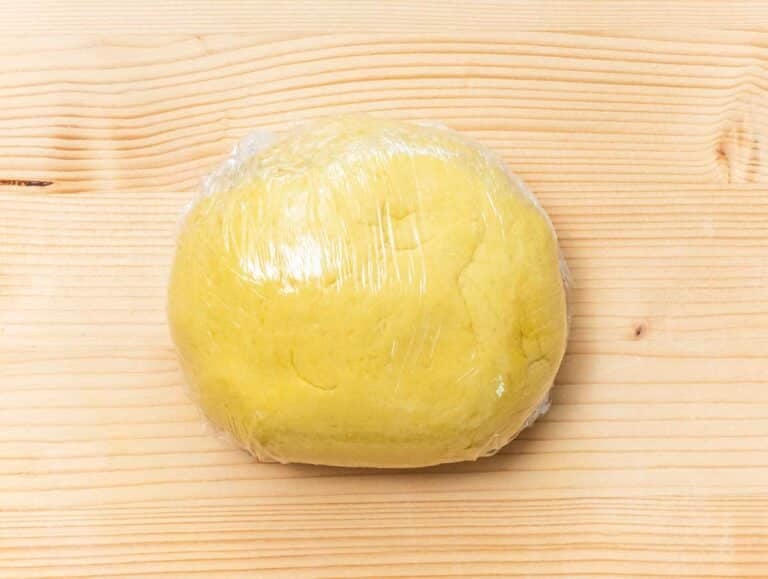
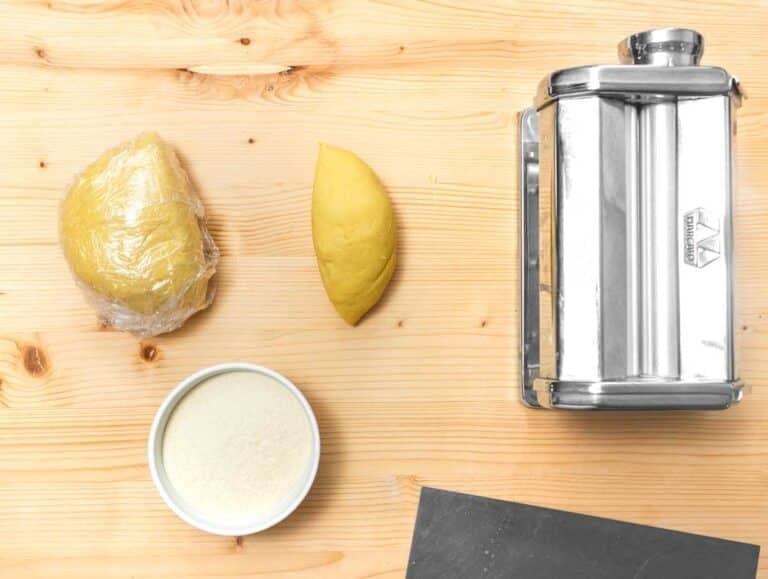
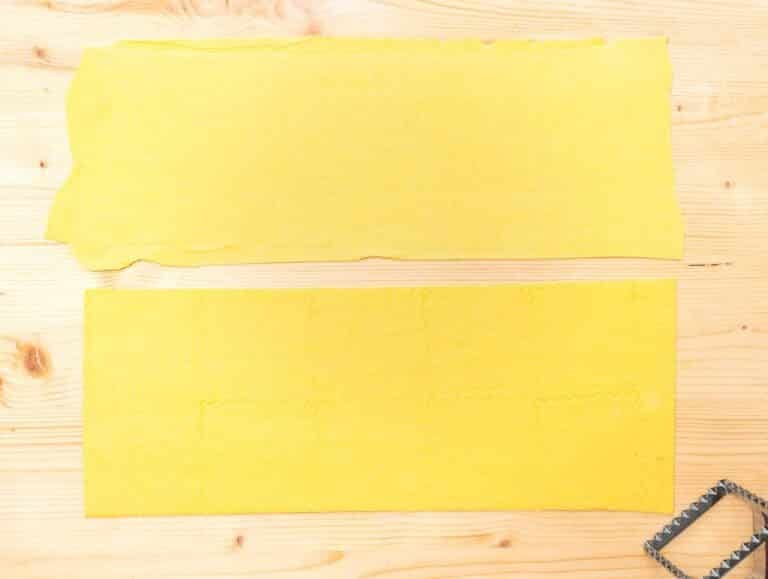
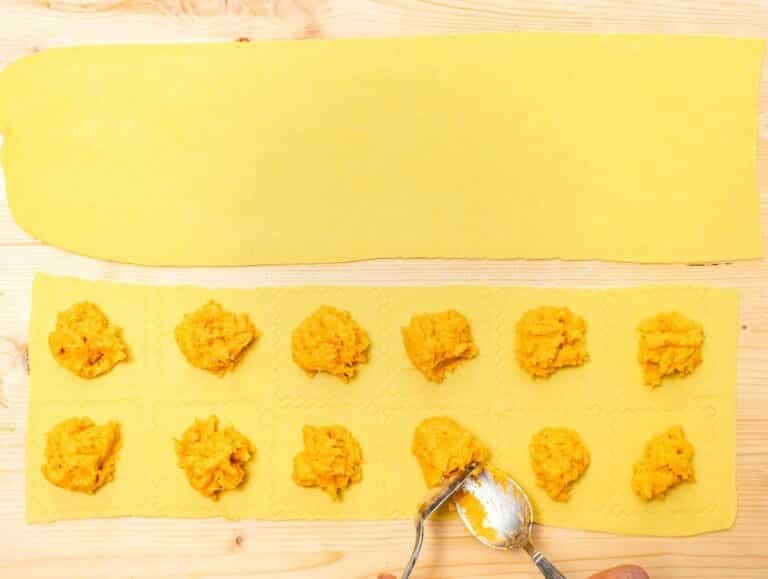
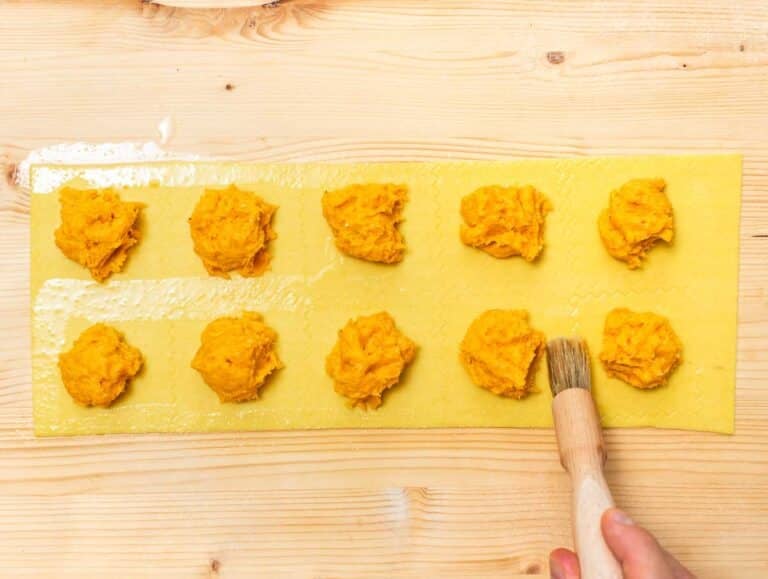
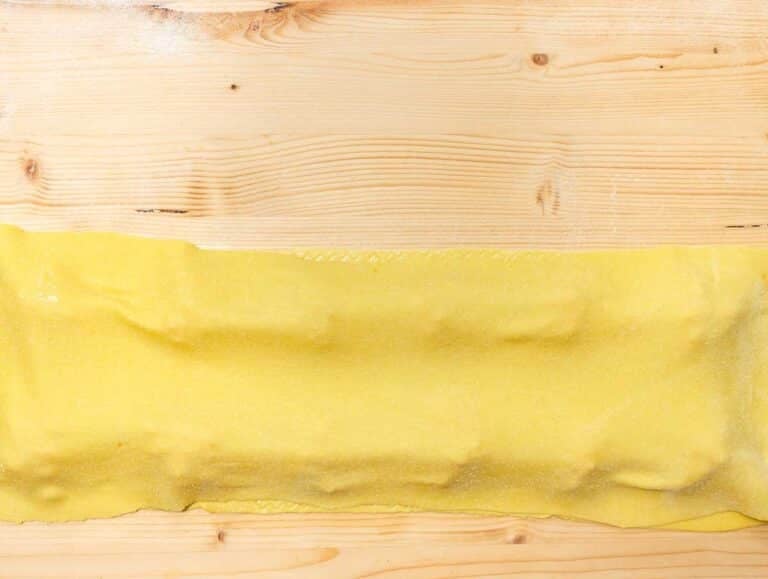
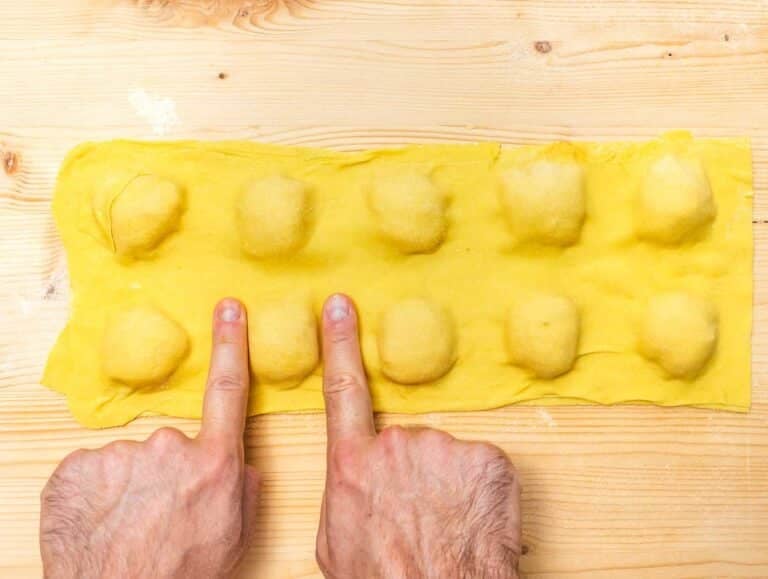
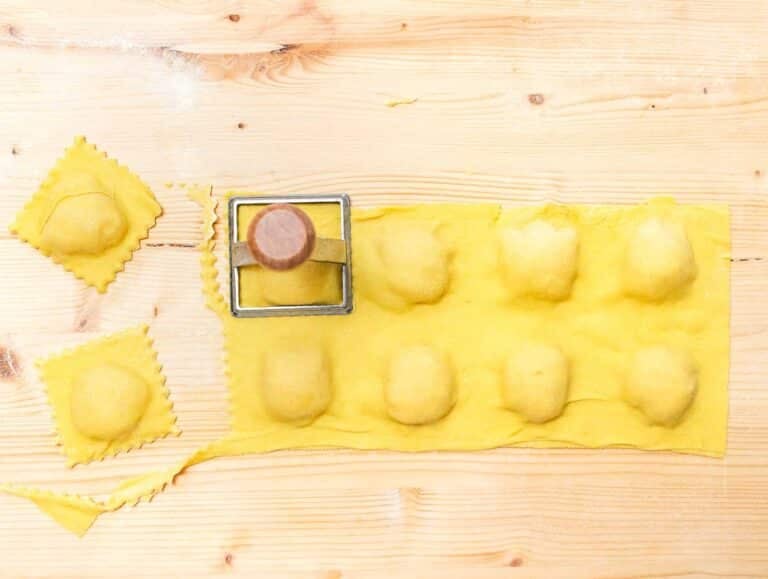
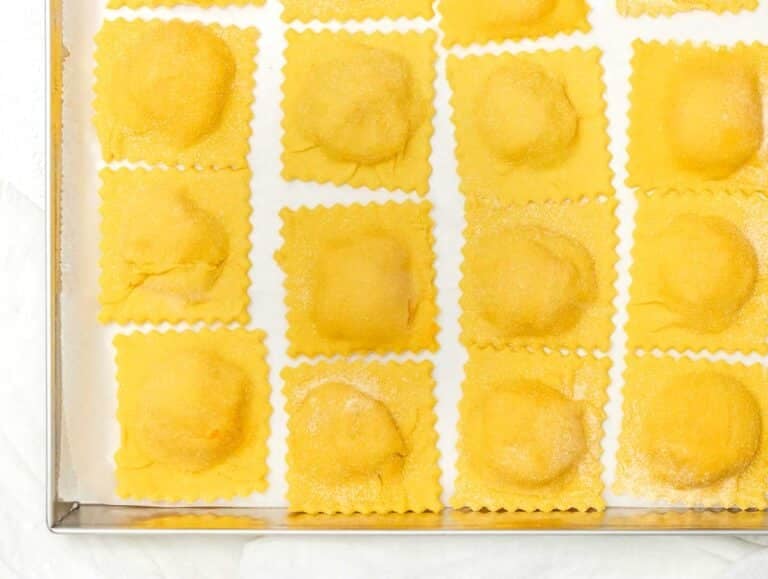
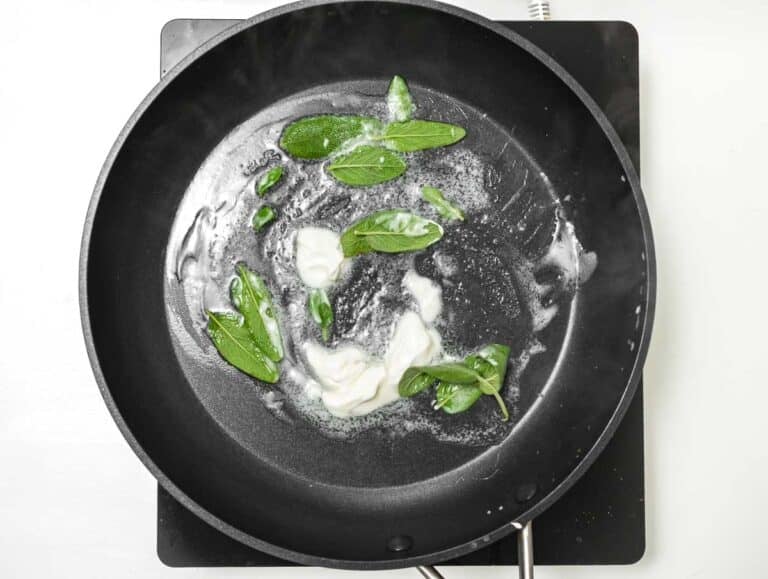
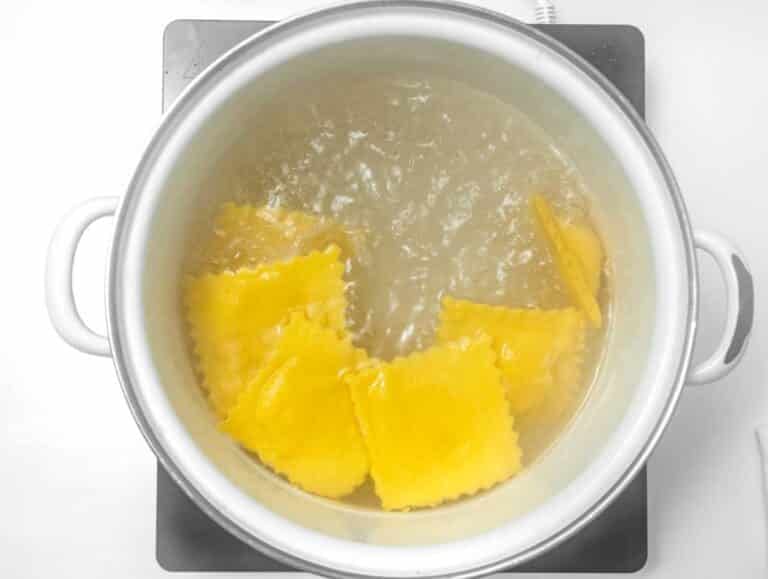


is it possible for this to be “made ahead”? i.e. everything down to but not boiling the ravioli?
Hi Marcy, thanks for your comment. Yes, the best way to store butternut squash ravioli is to do so before cooking them. You can store them in the refrigerator, covered on a tray for about 3 days.
Or you can freeze them for up to 6 months. To do so, arrange them on a baking sheet without overlapping. Pop them in the freezer for about 2 hours, or until hard, then transfer them into a freezer-friendly bag to save space and put them back in the freezer. You won’t need to thaw frozen ravioli. Cook them in salted boiling water from frozen.
I hope this helps! Cheers, Nico